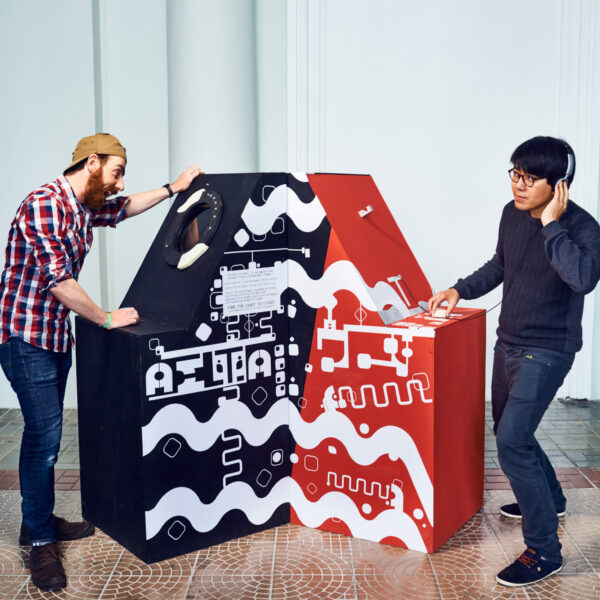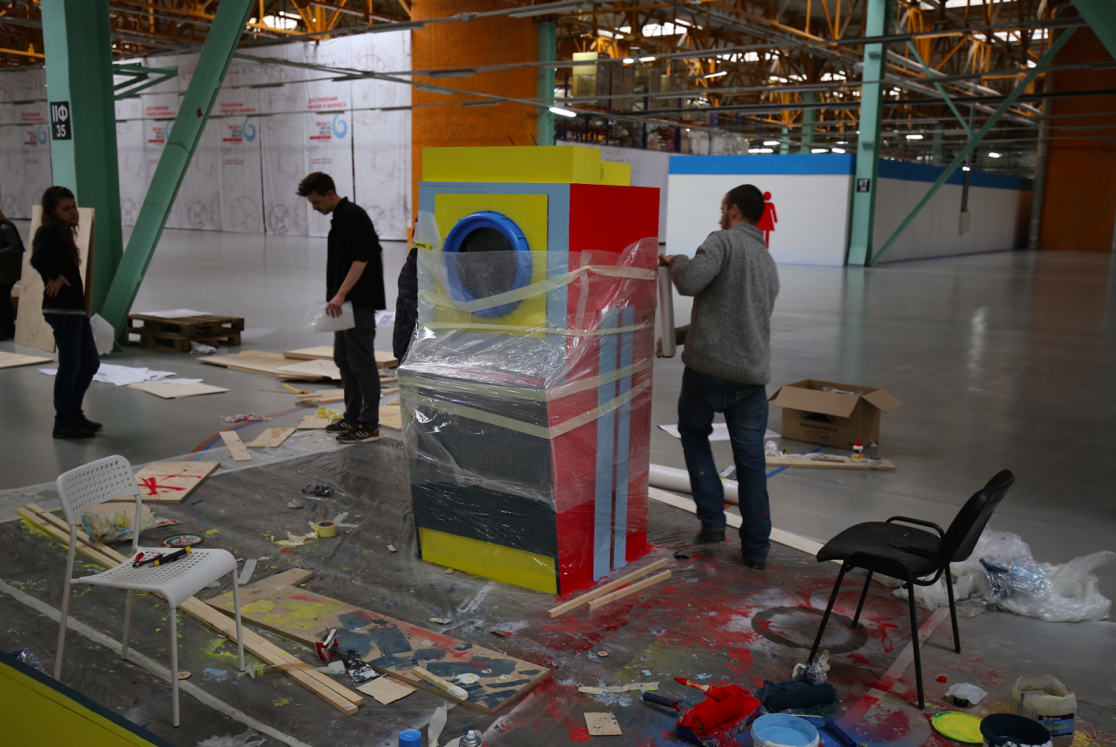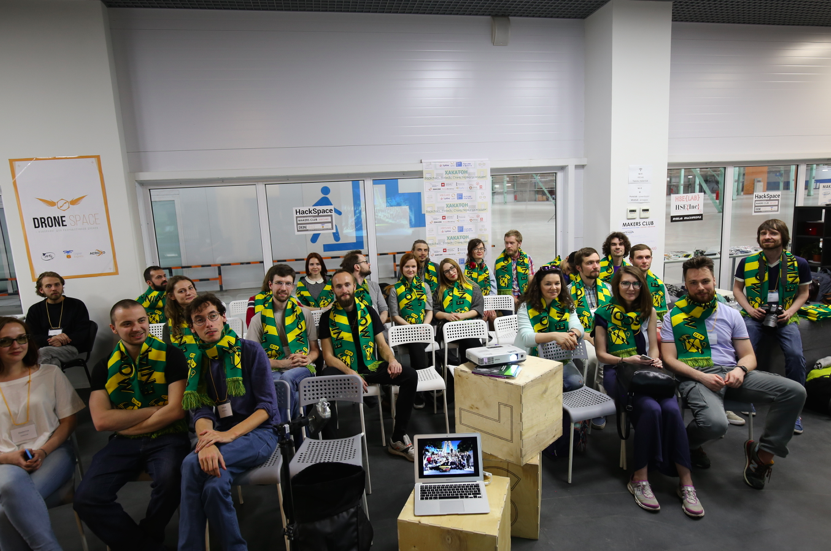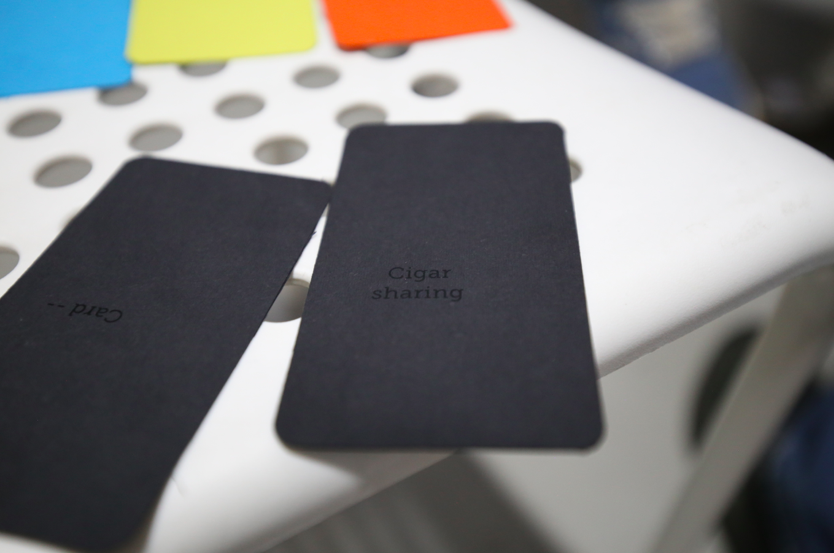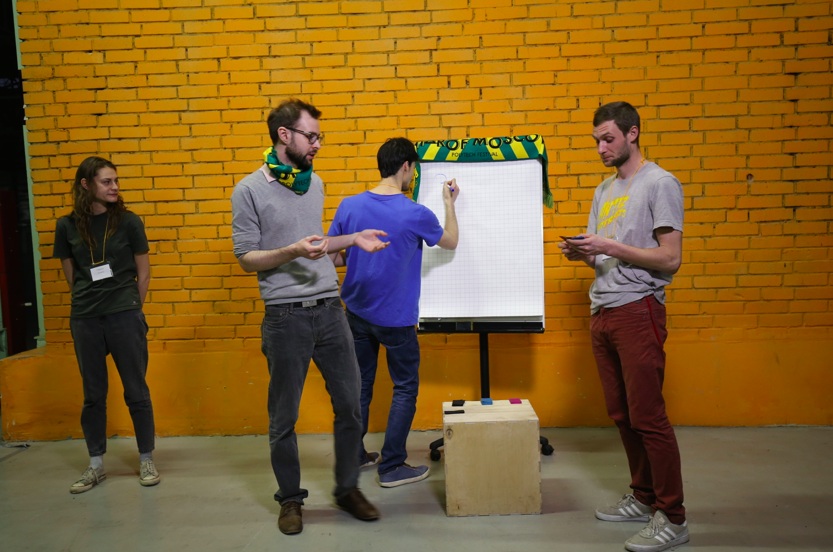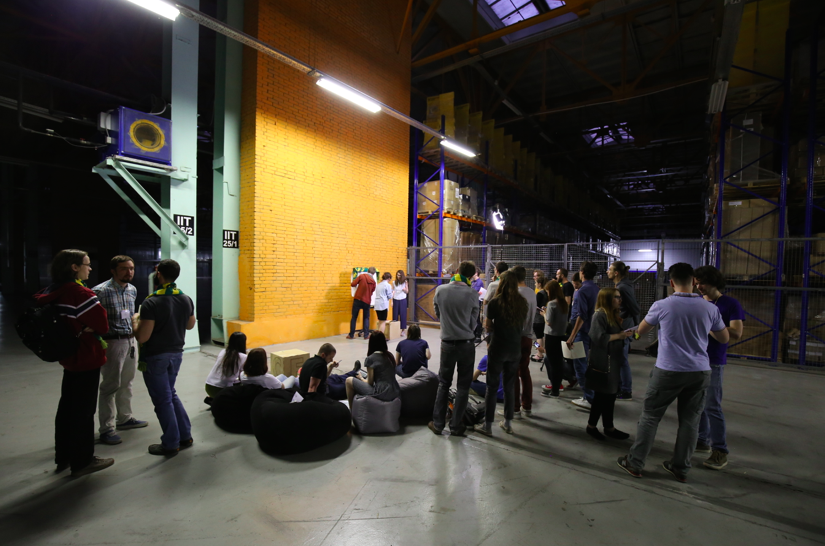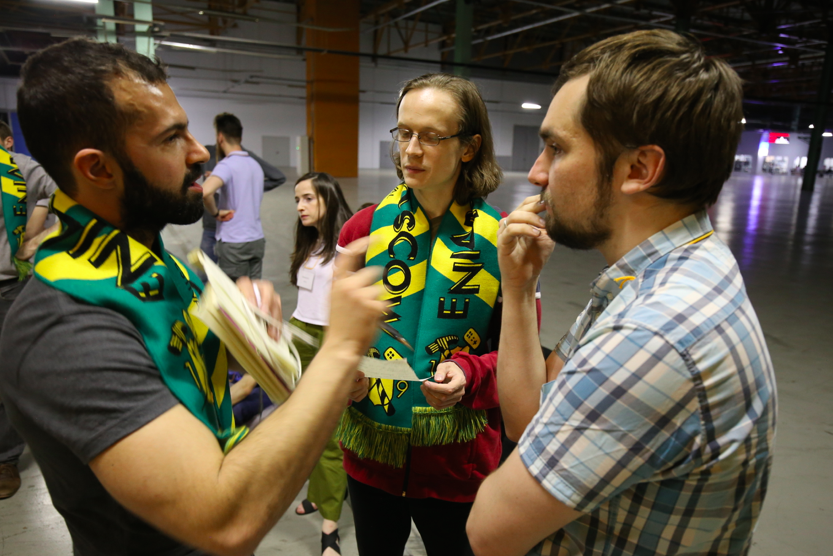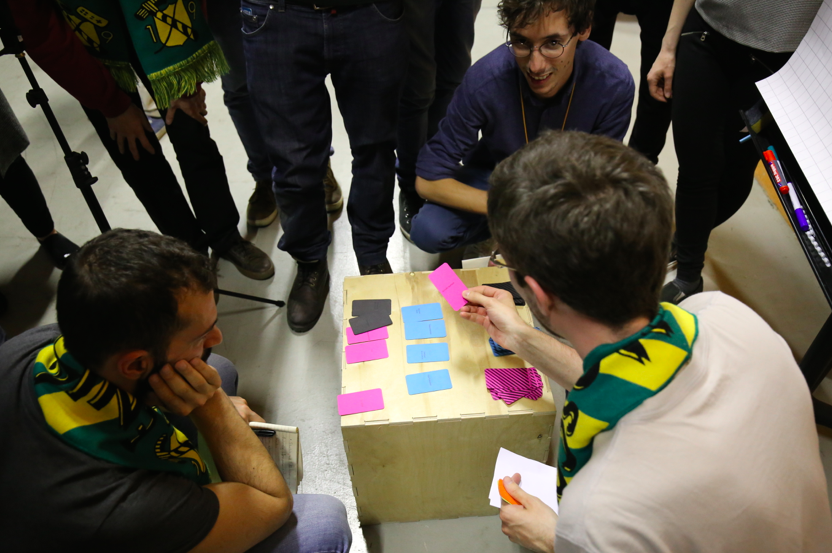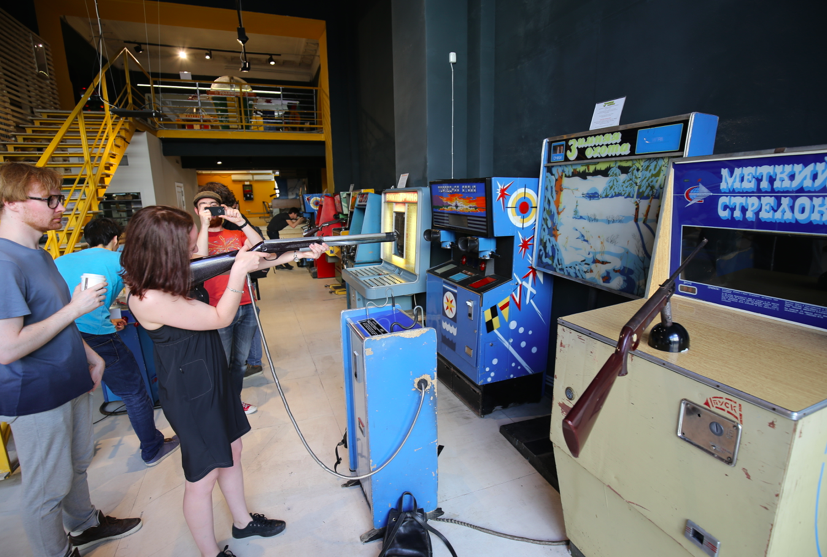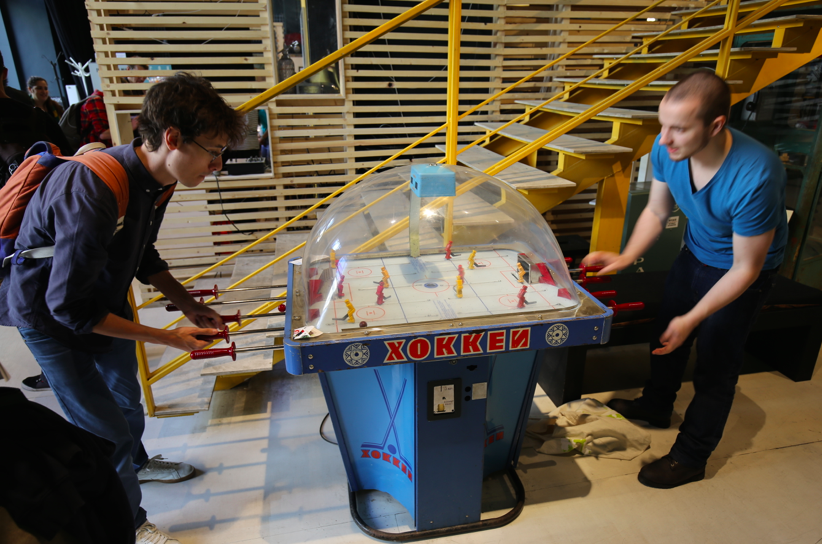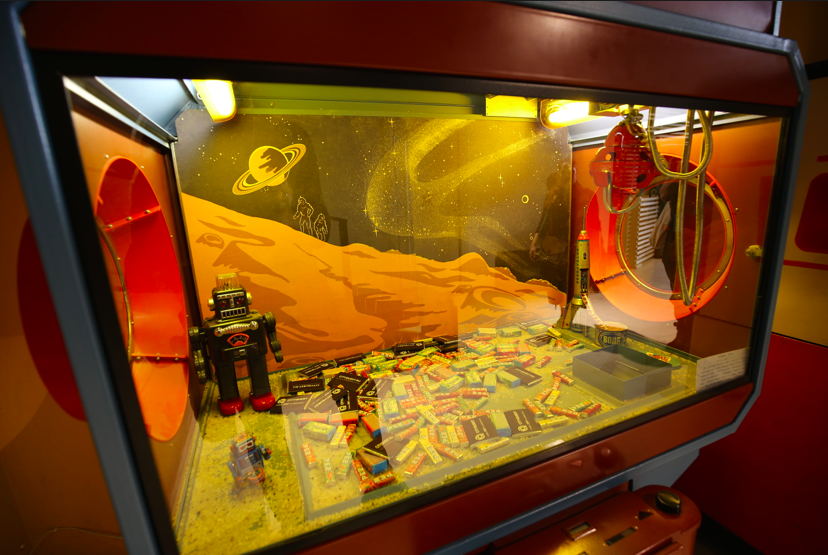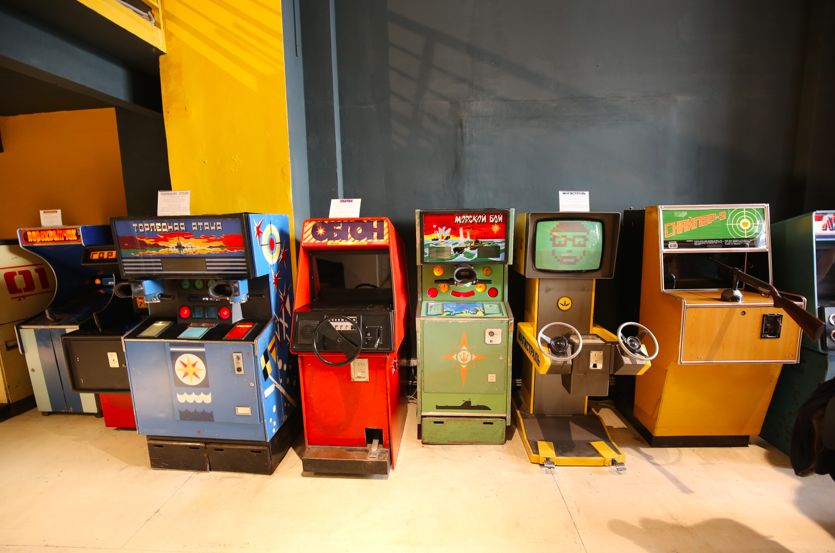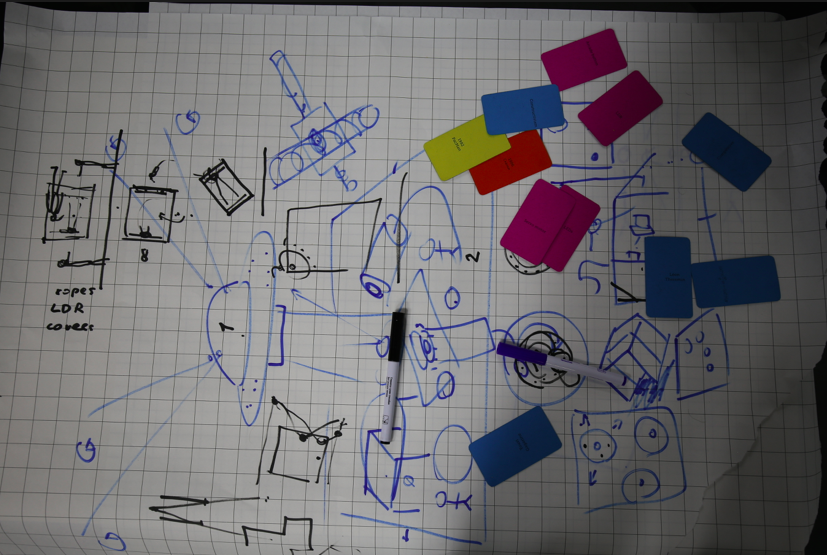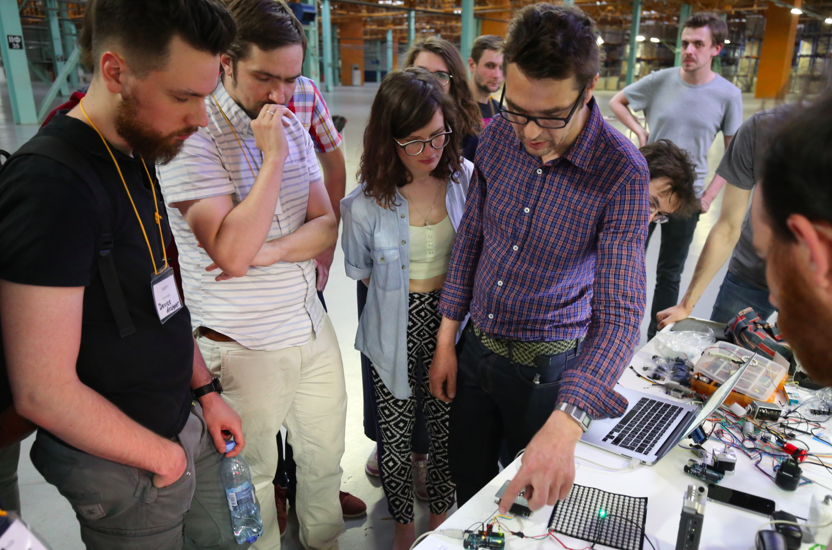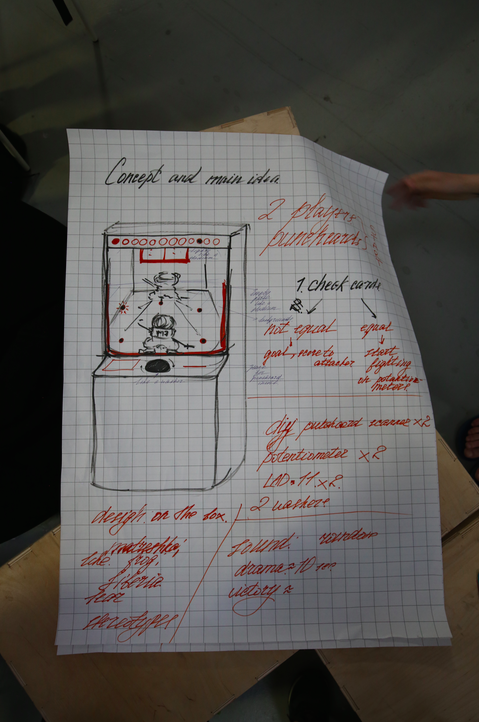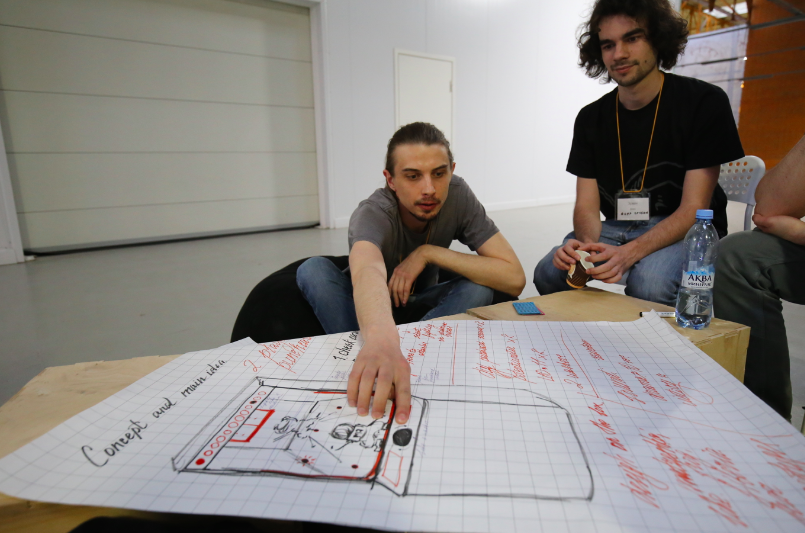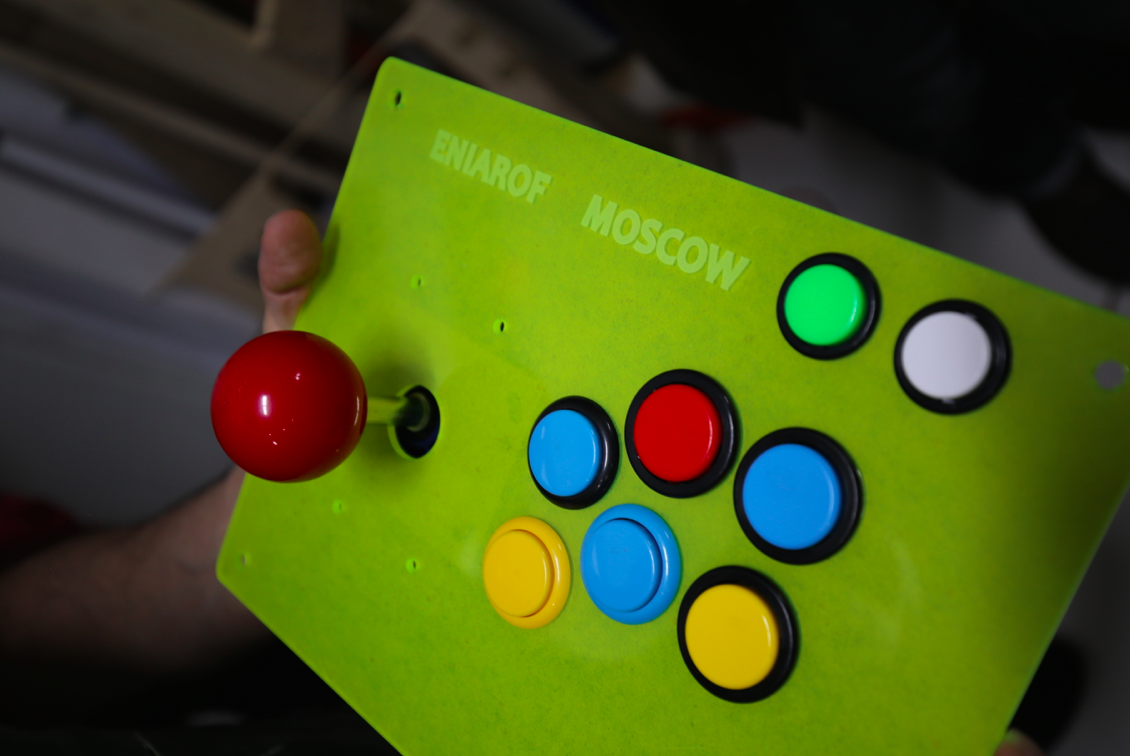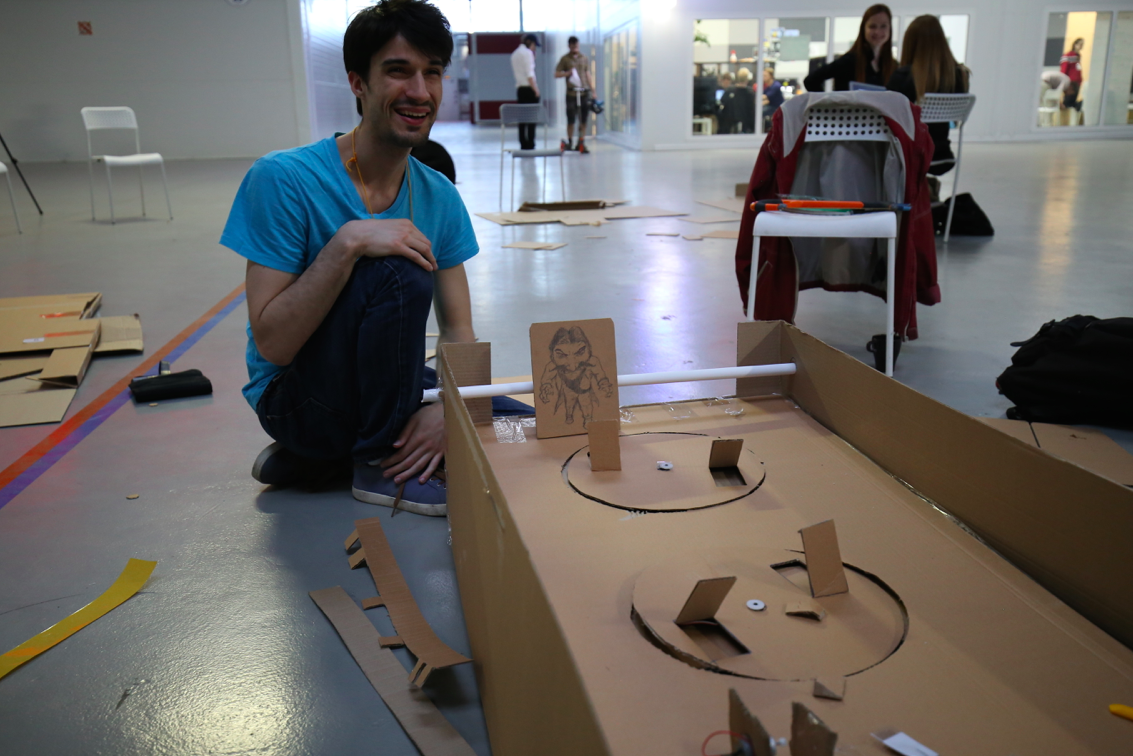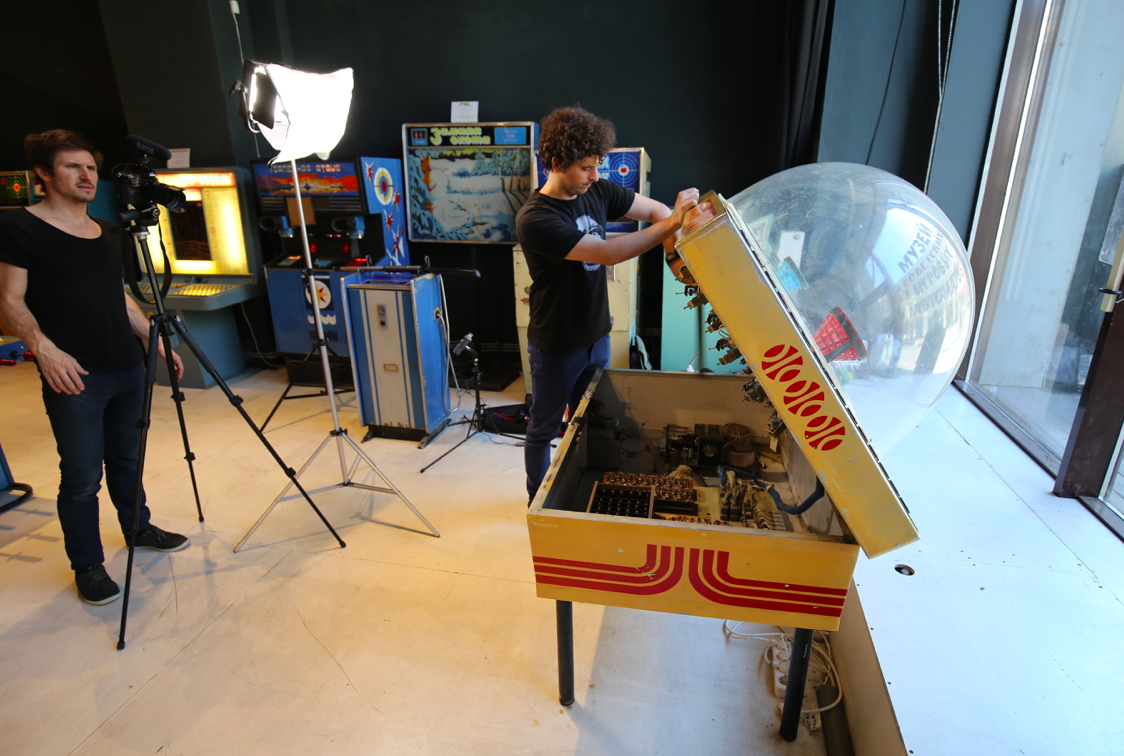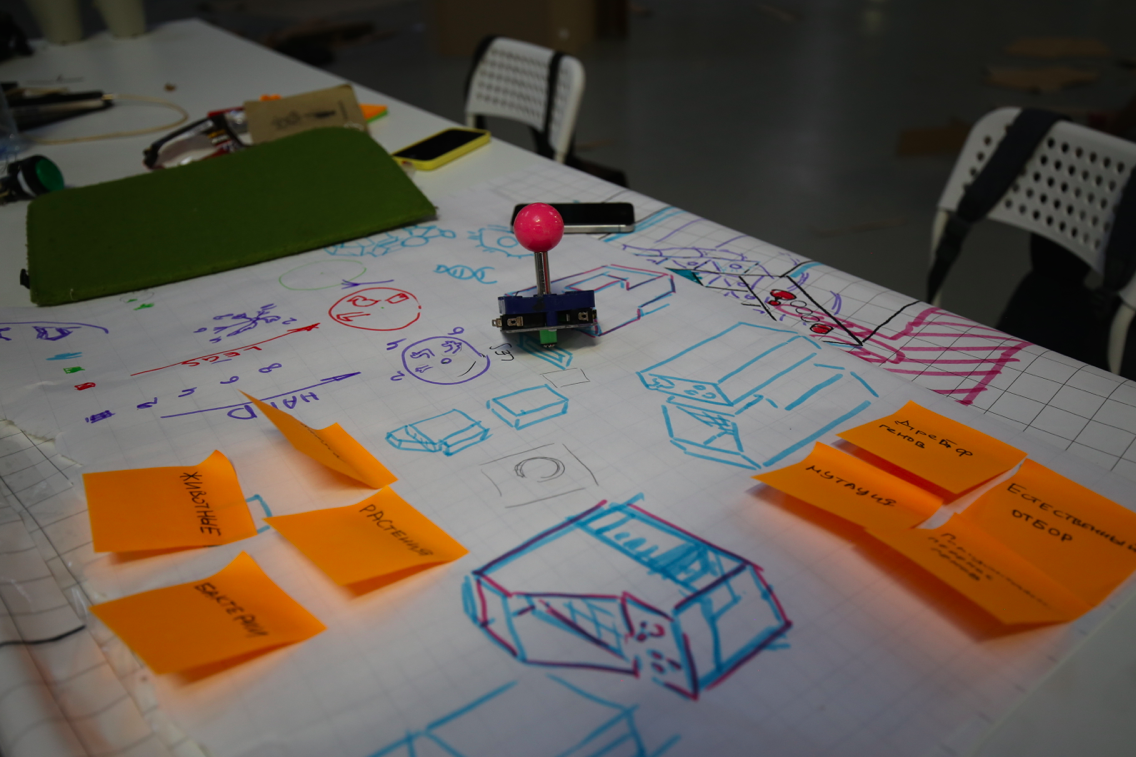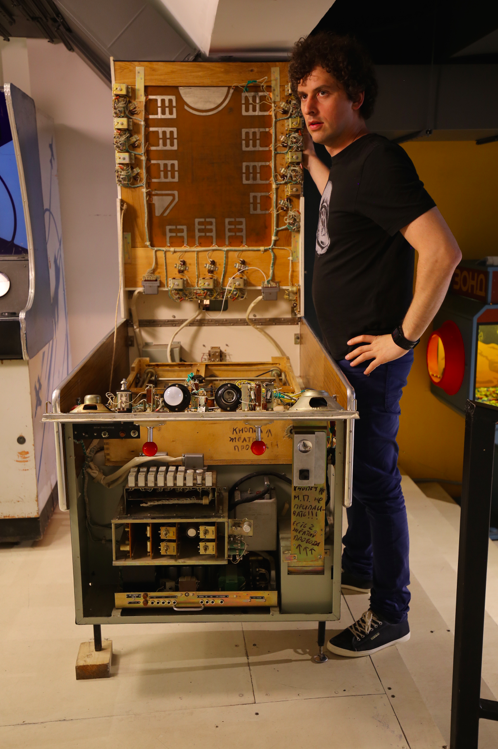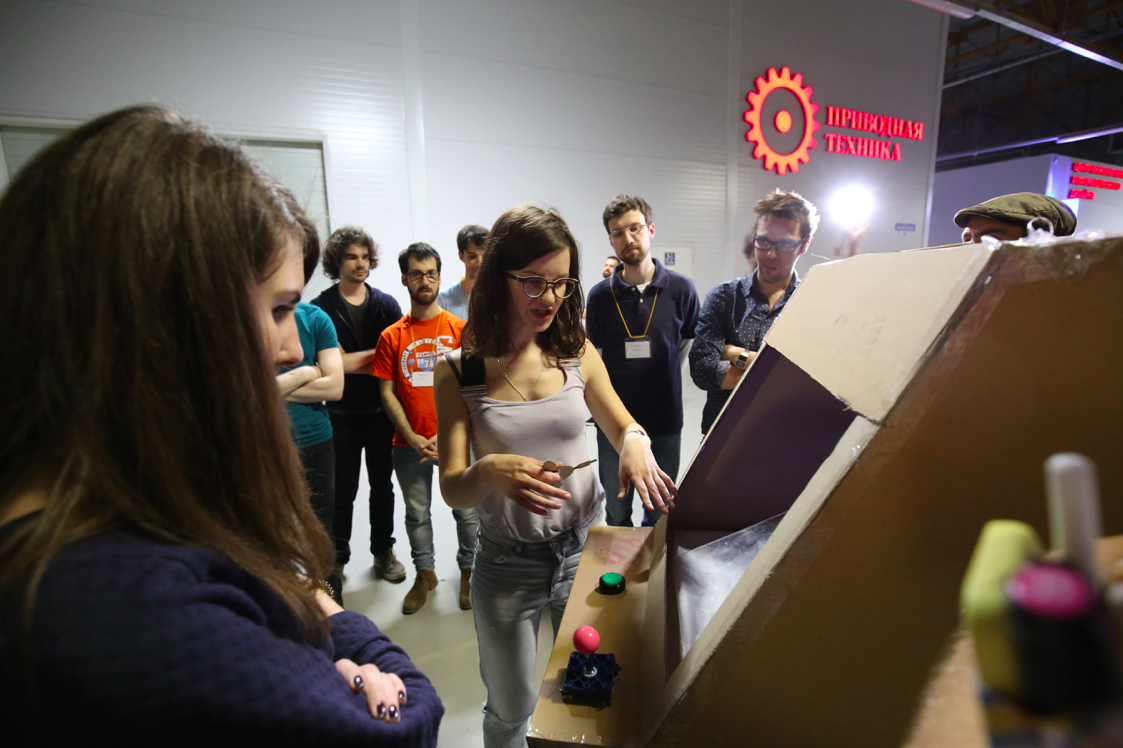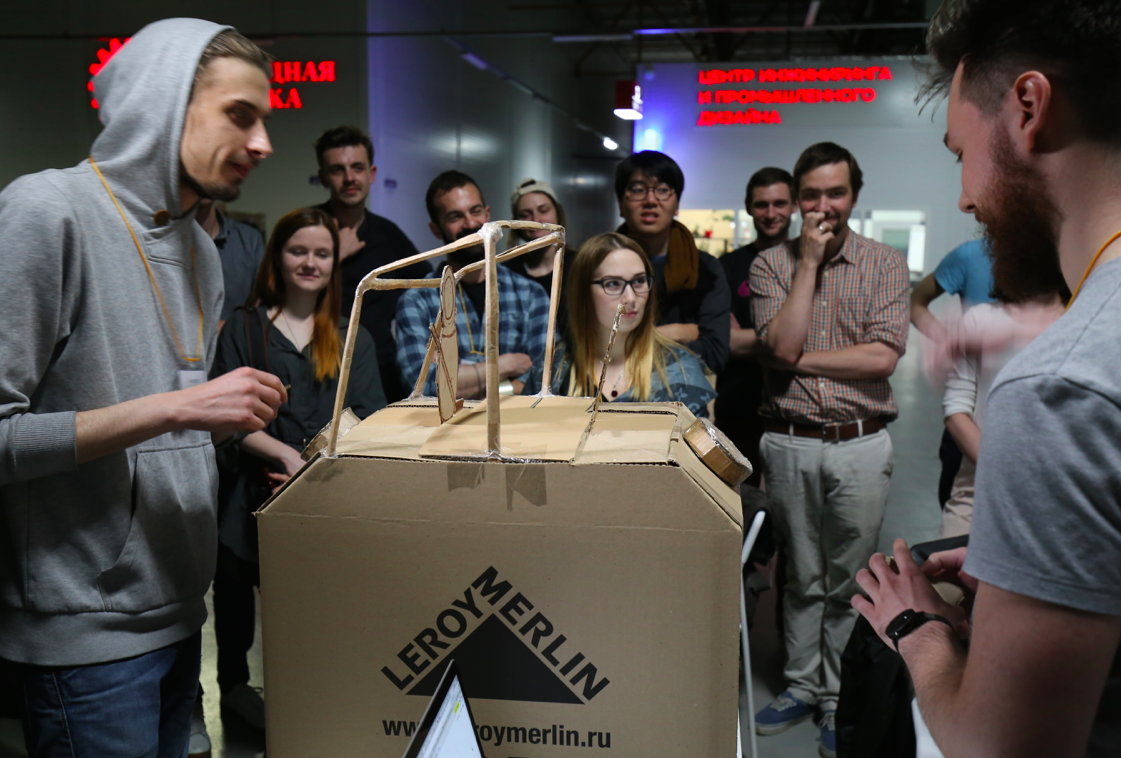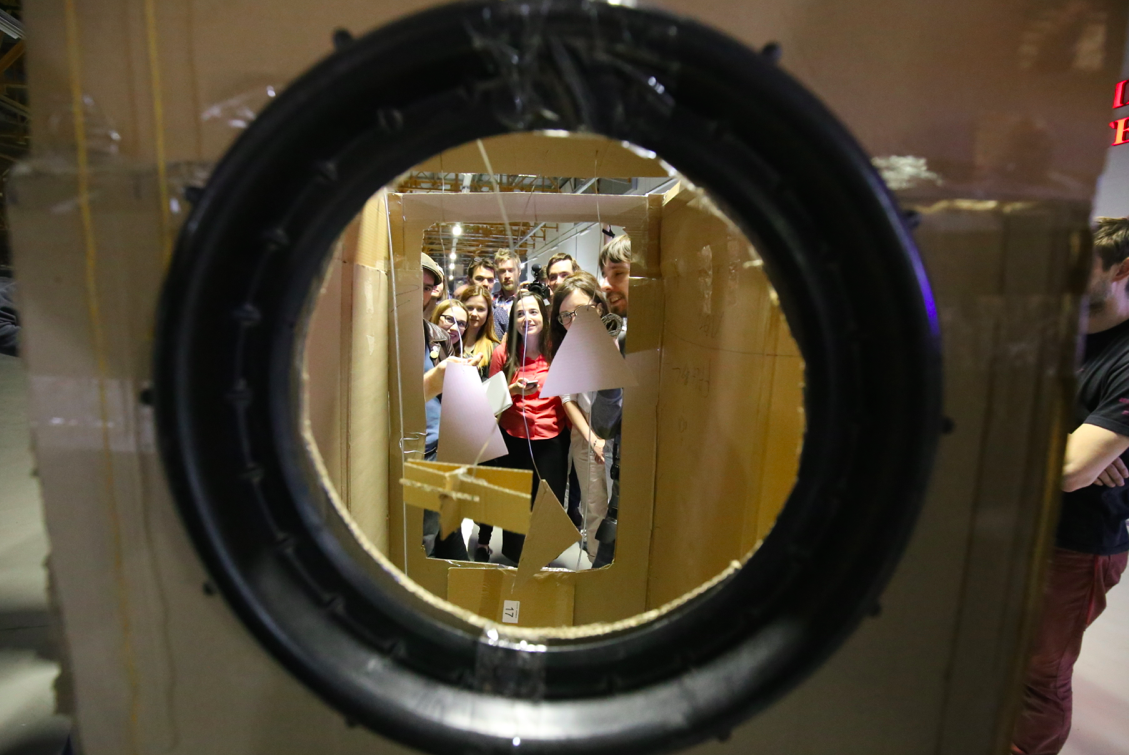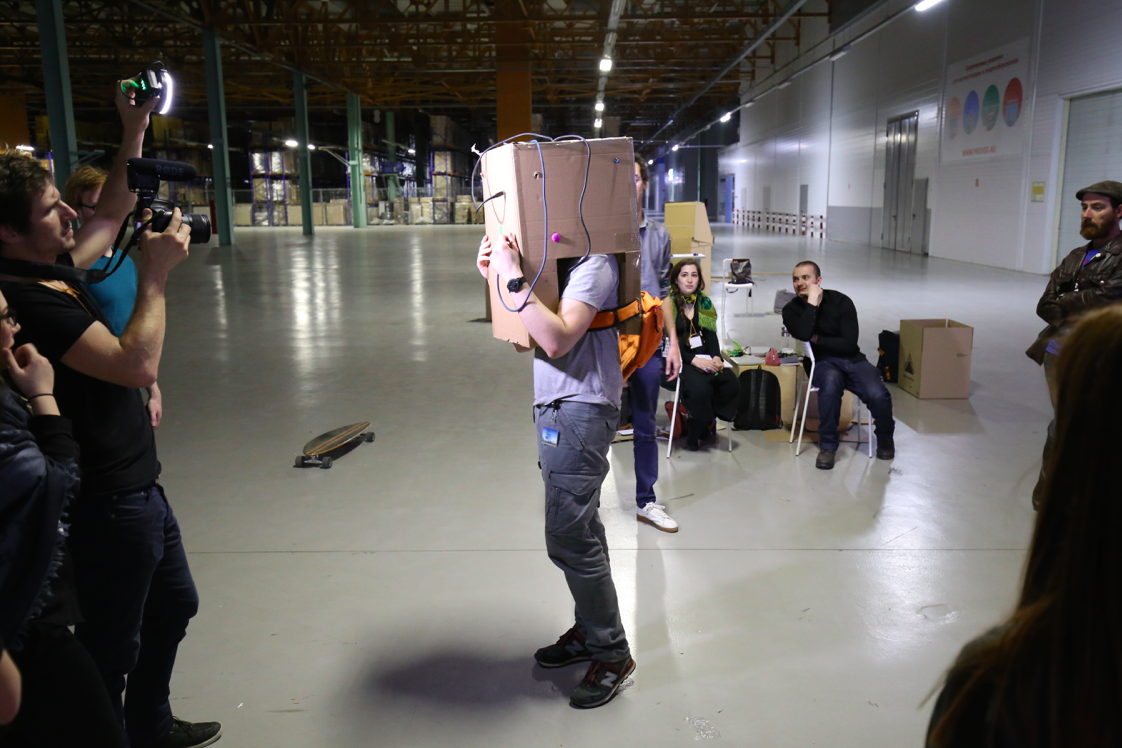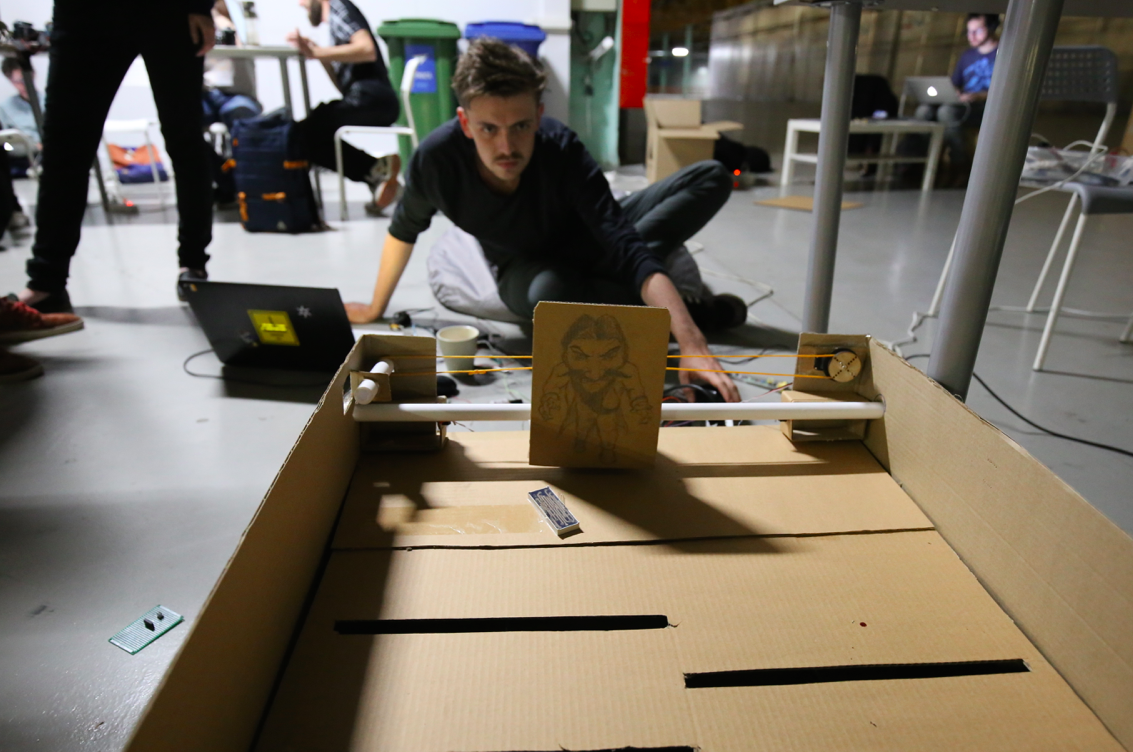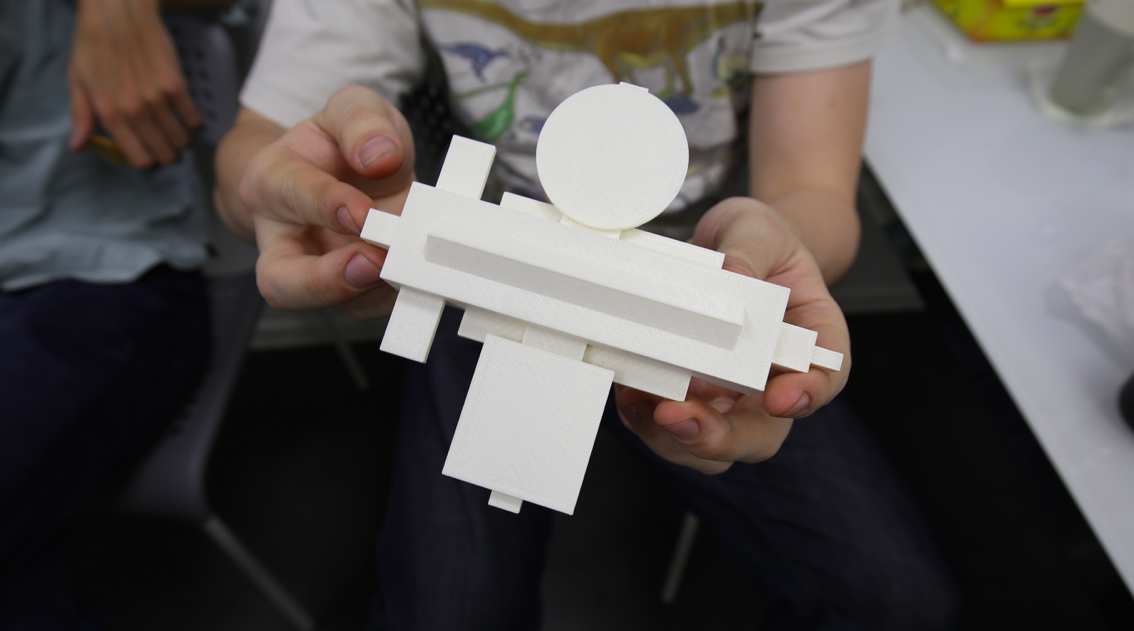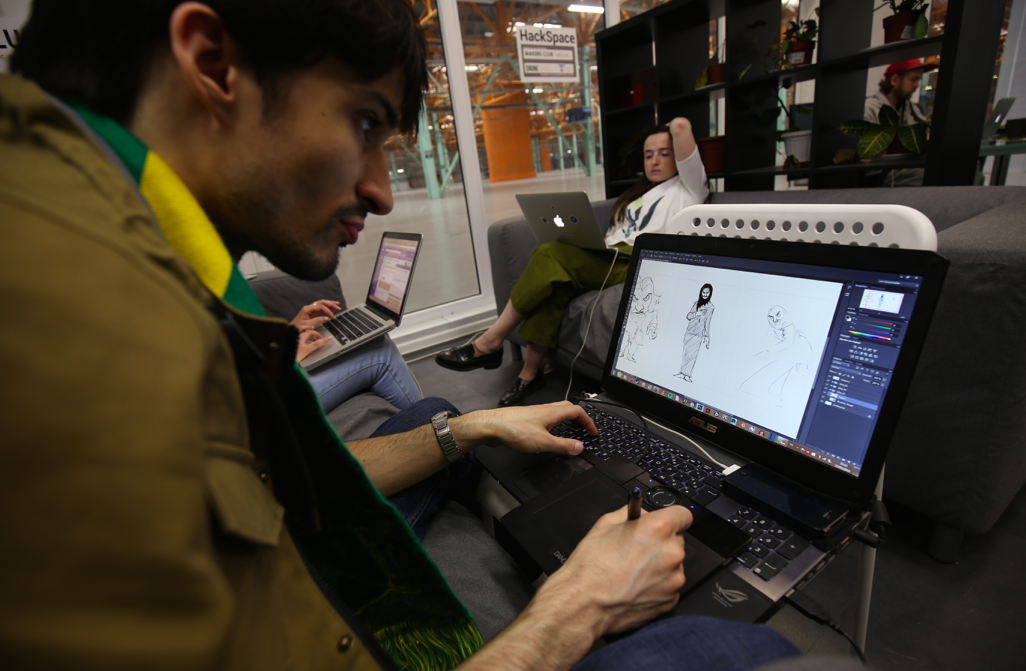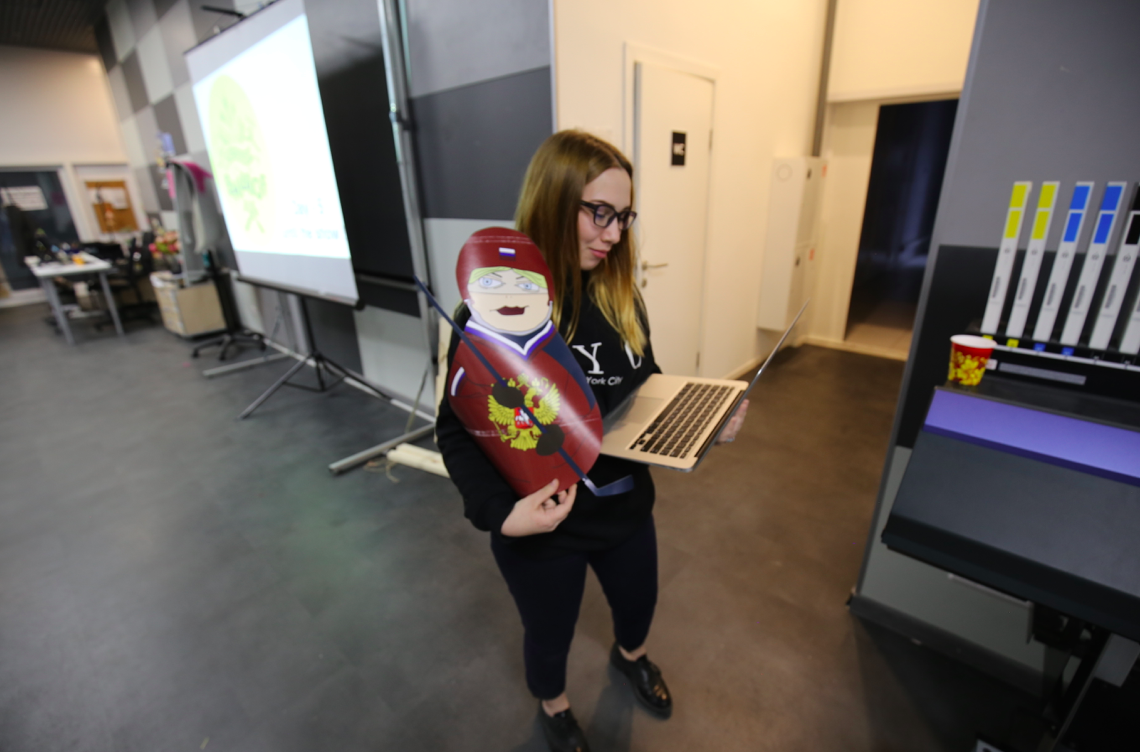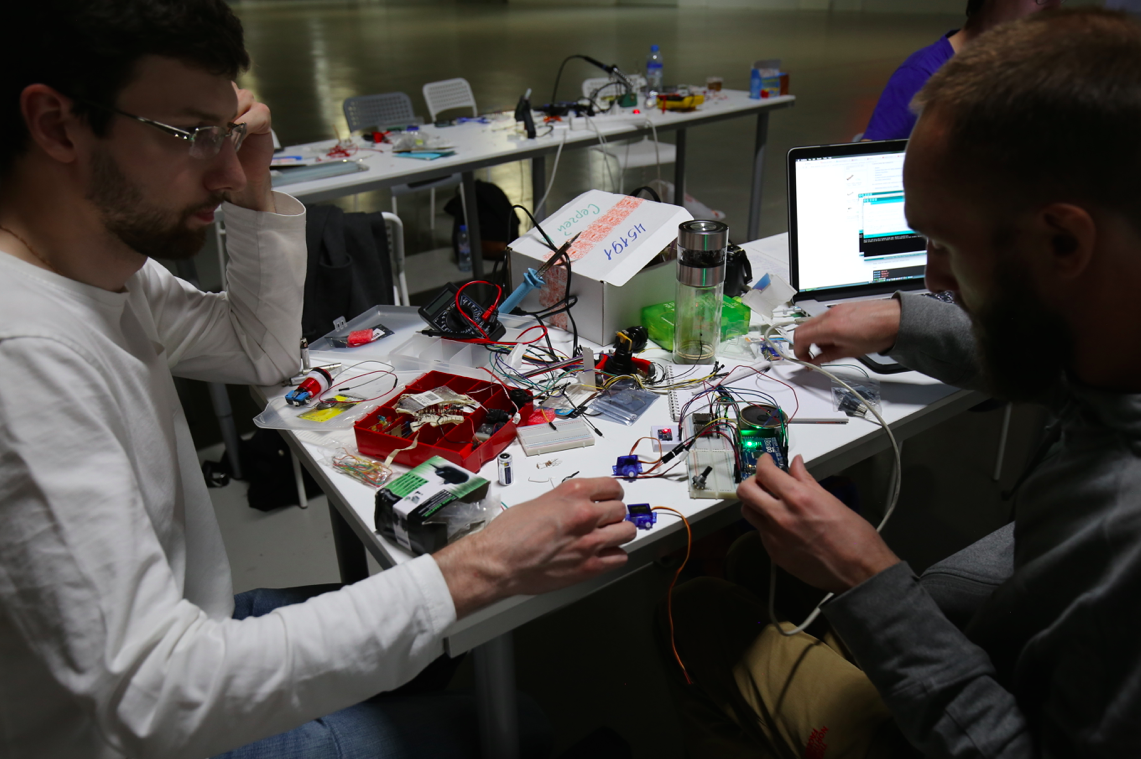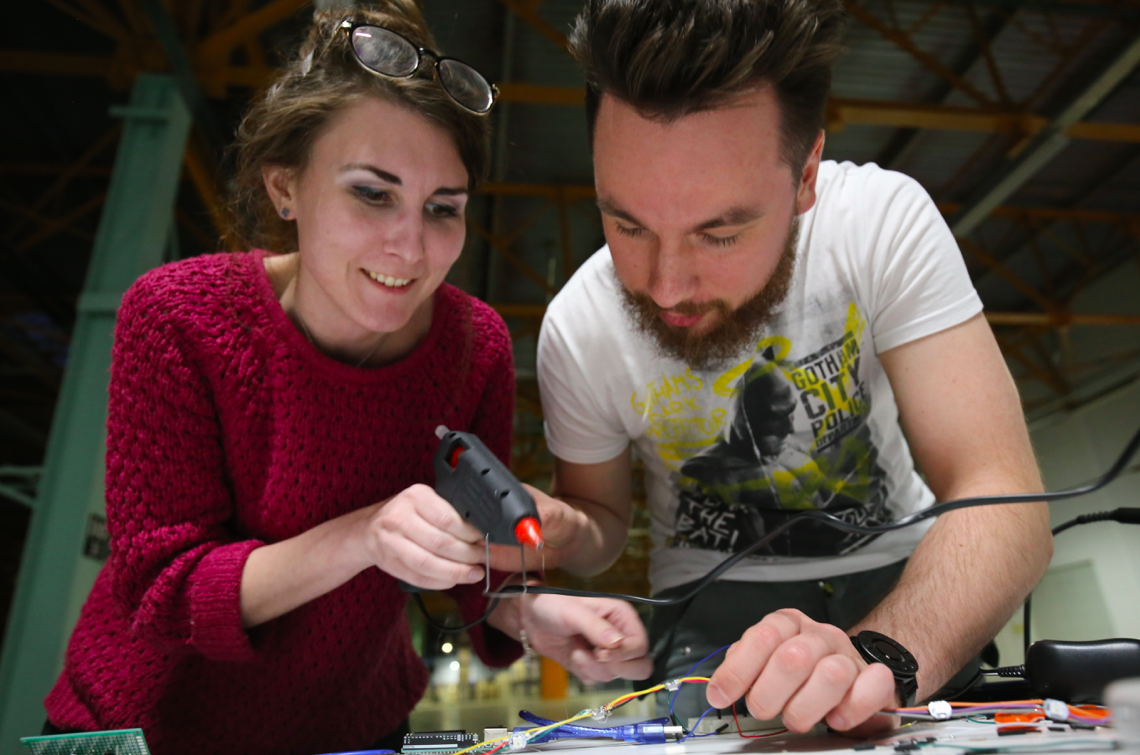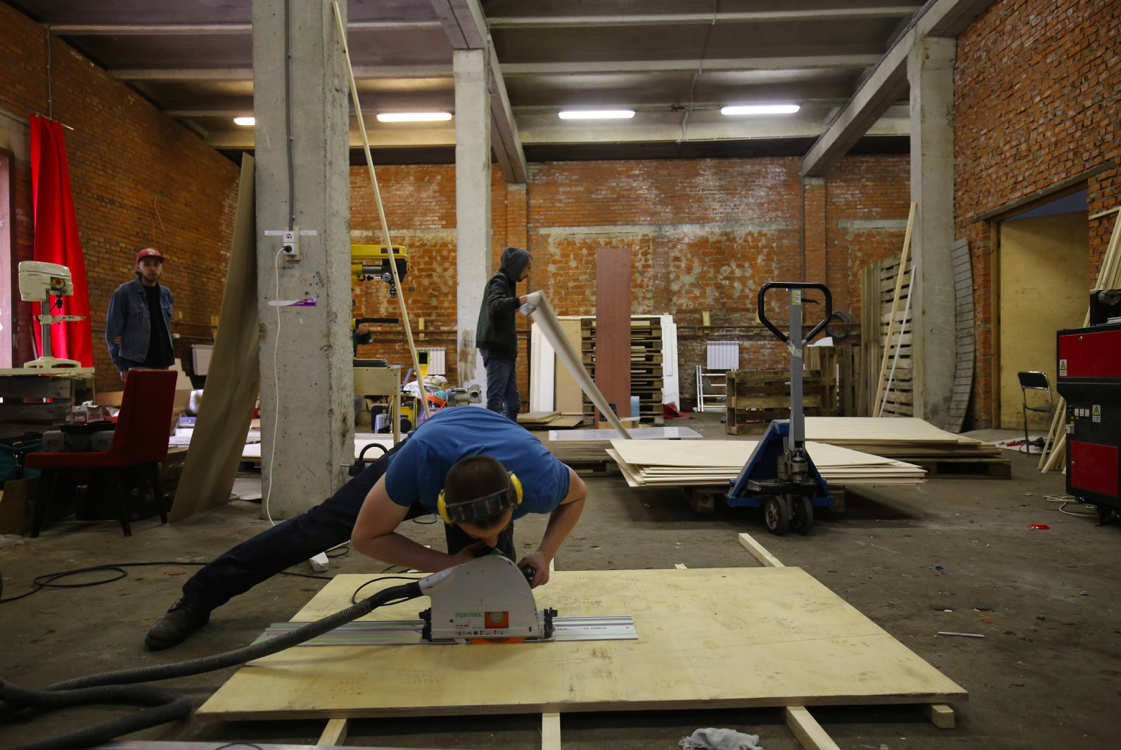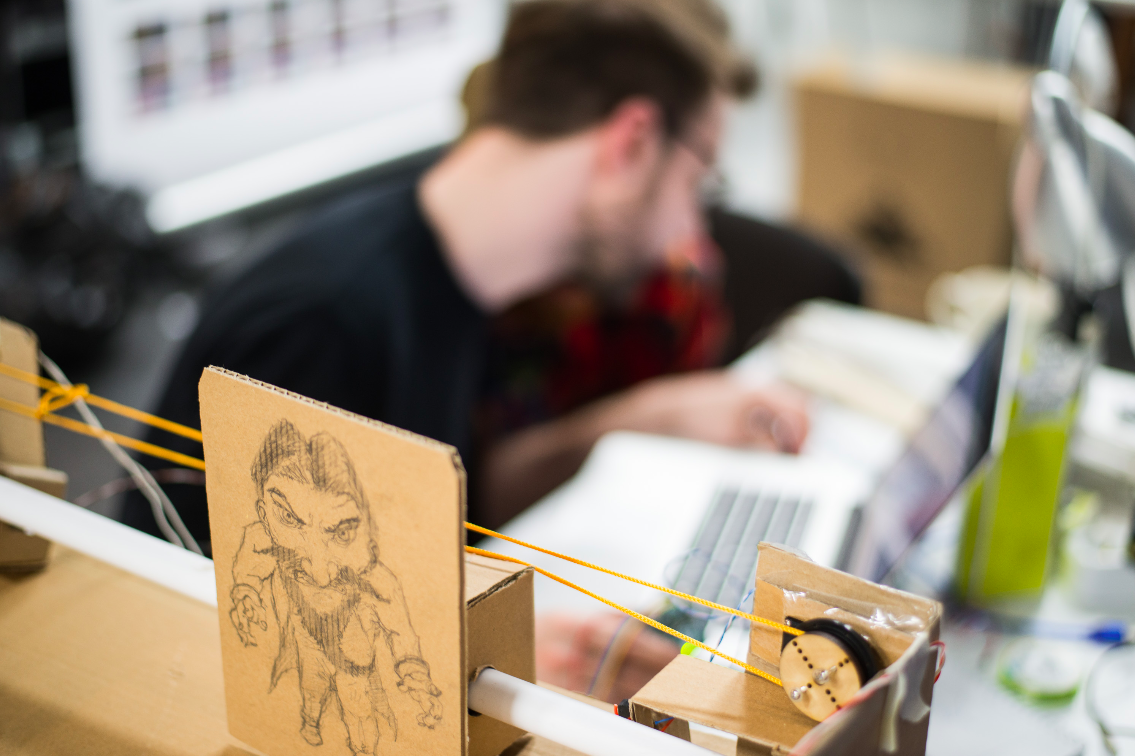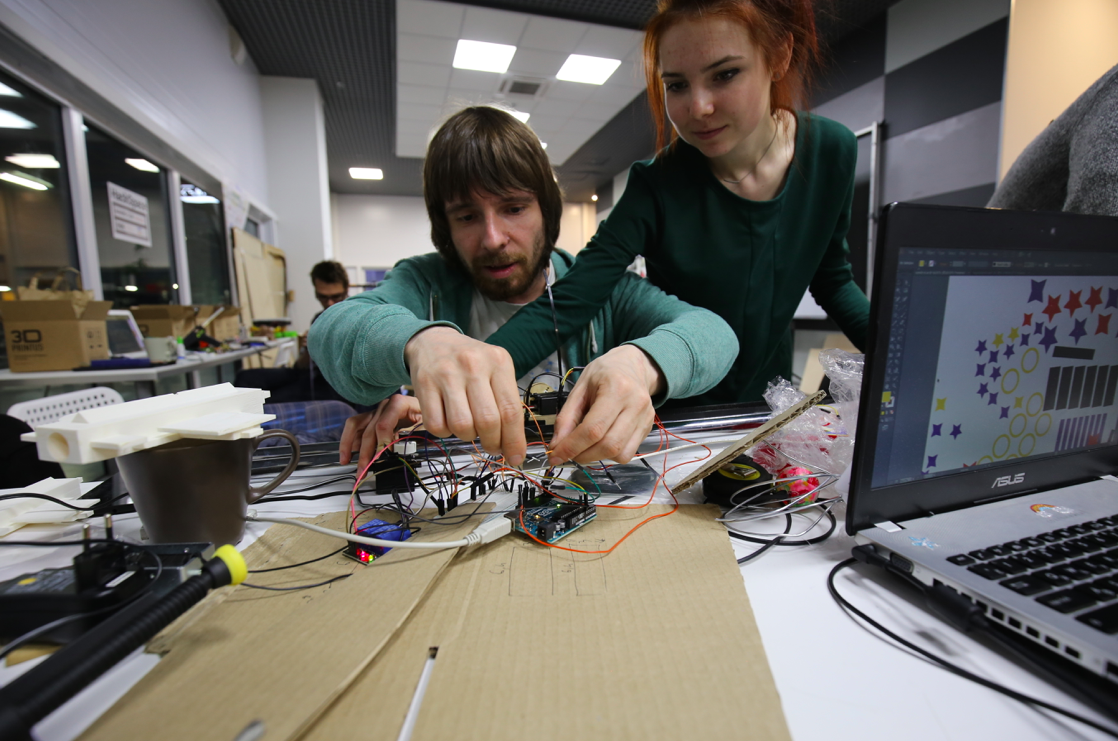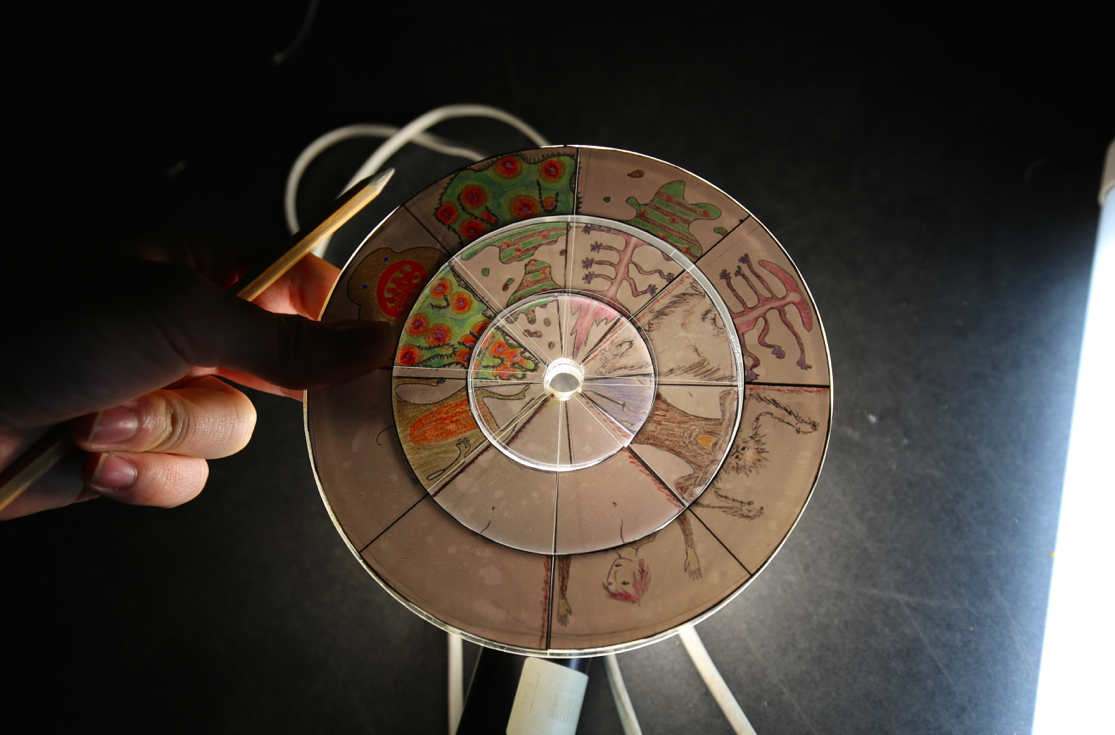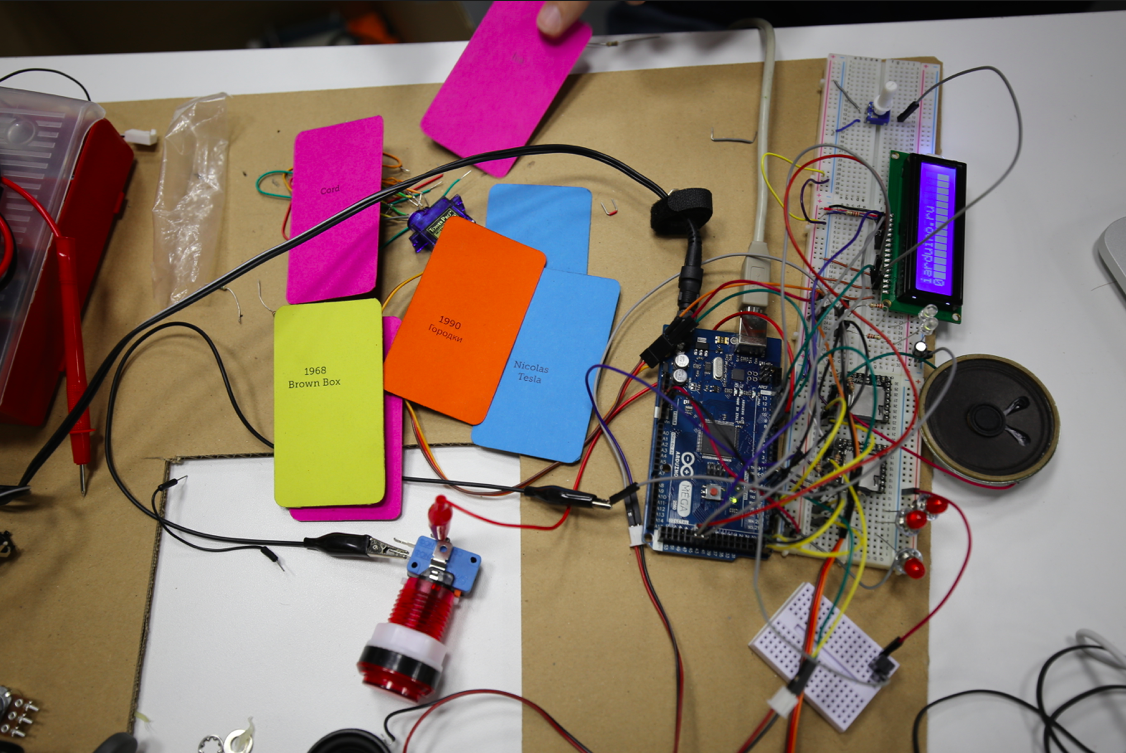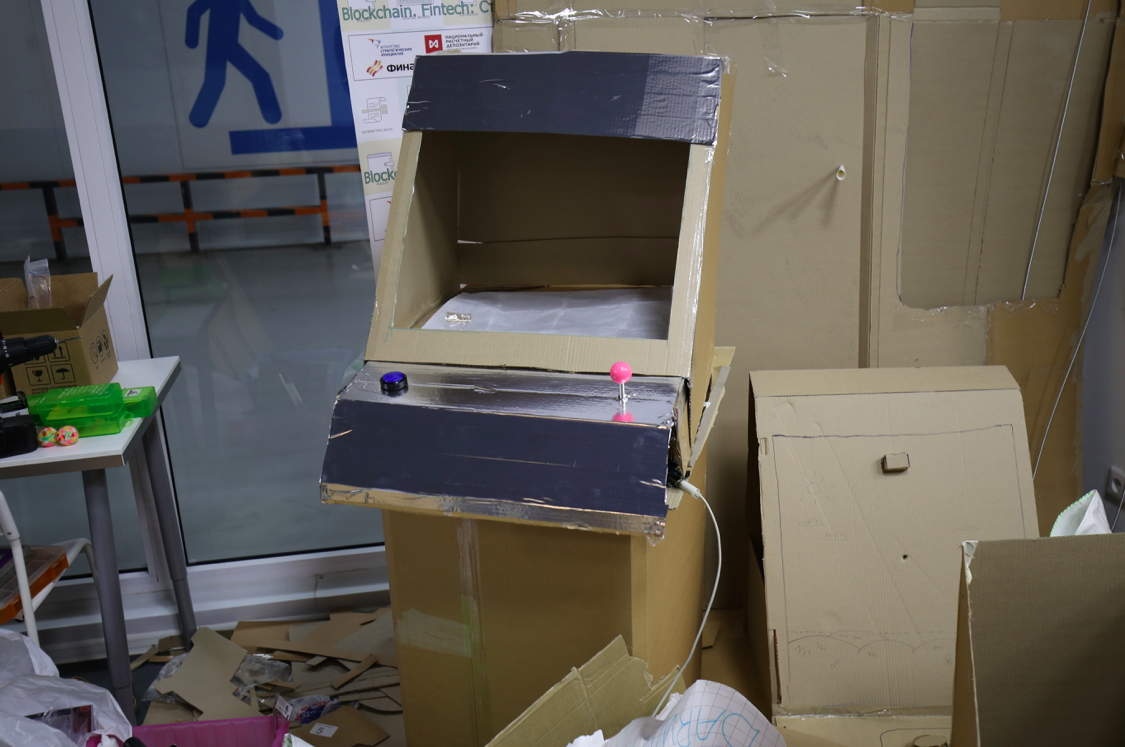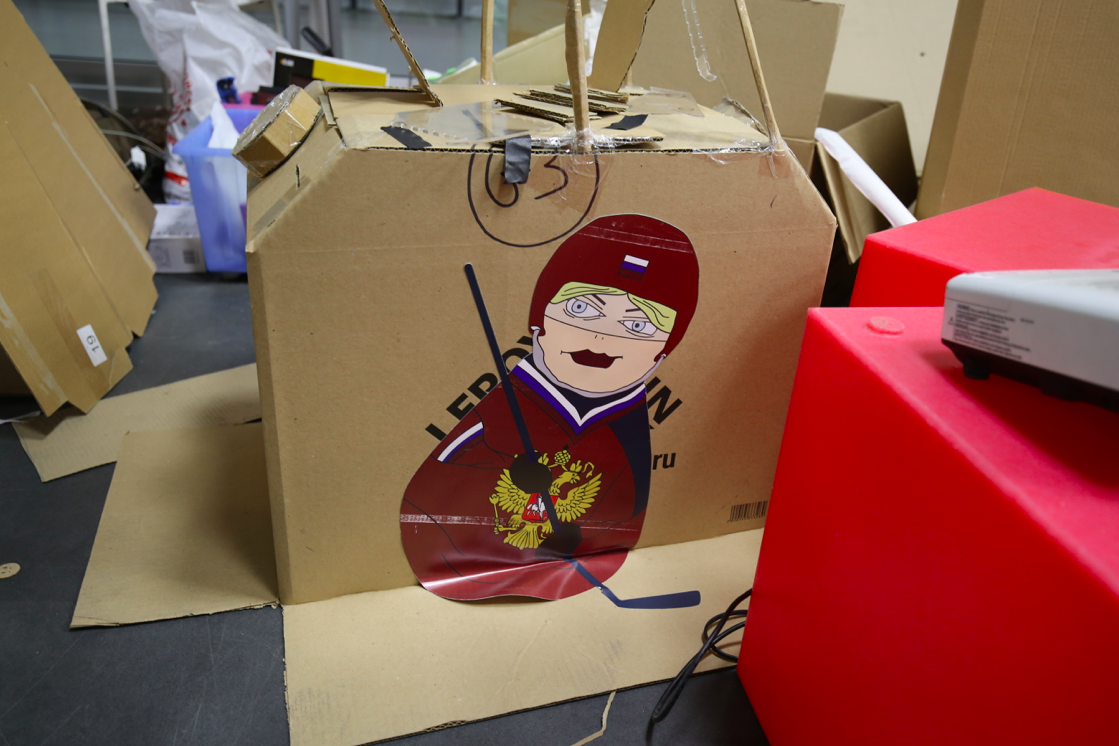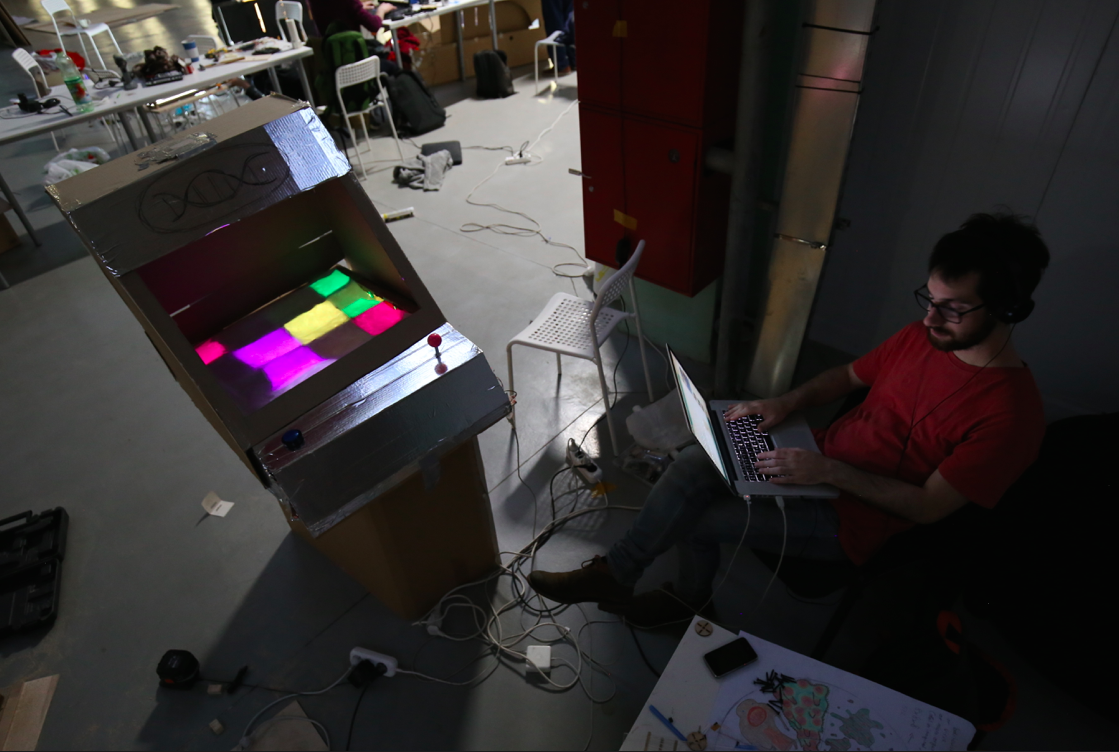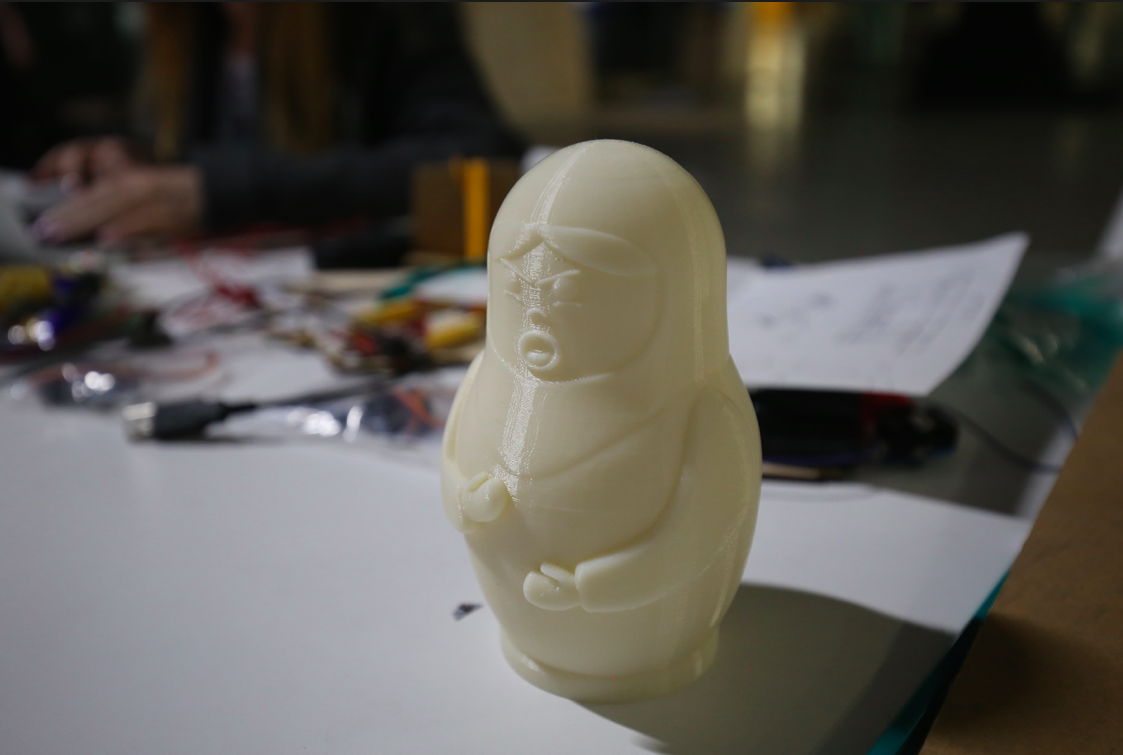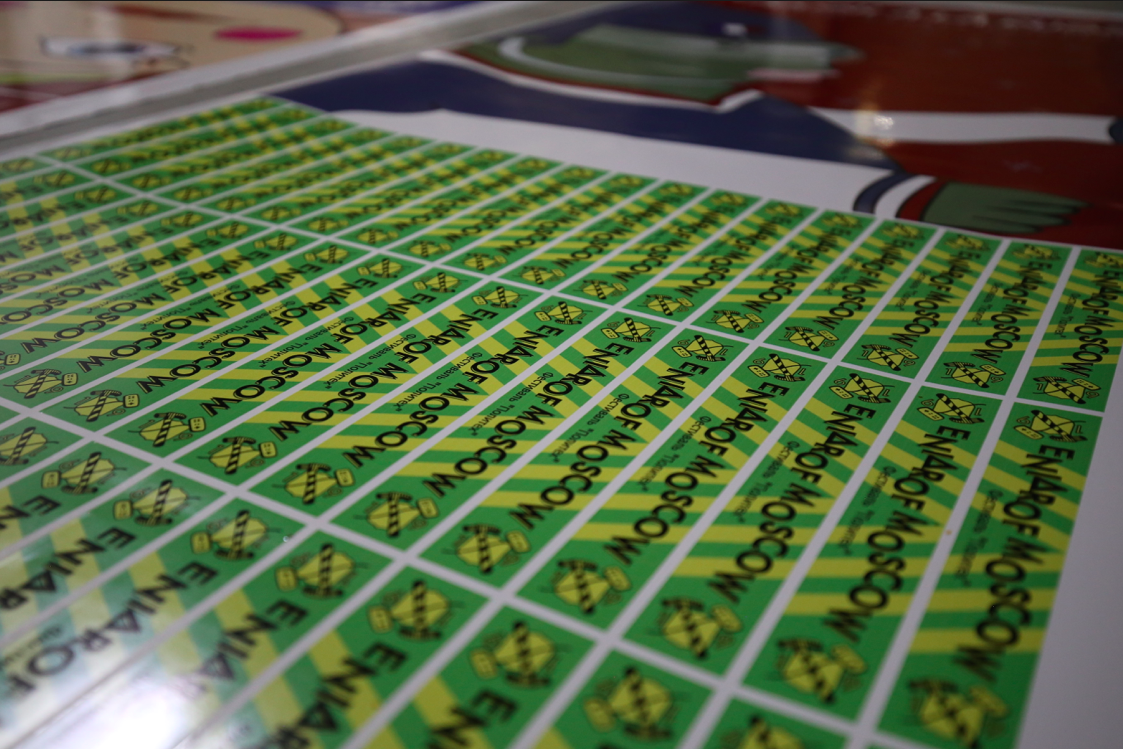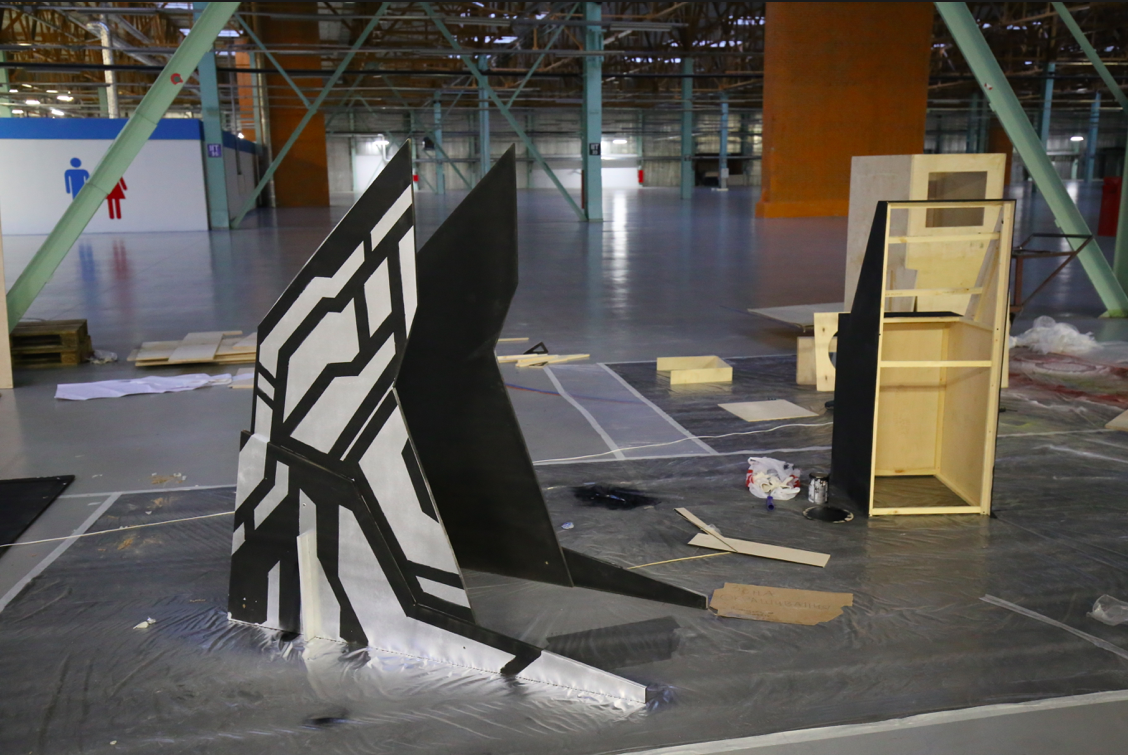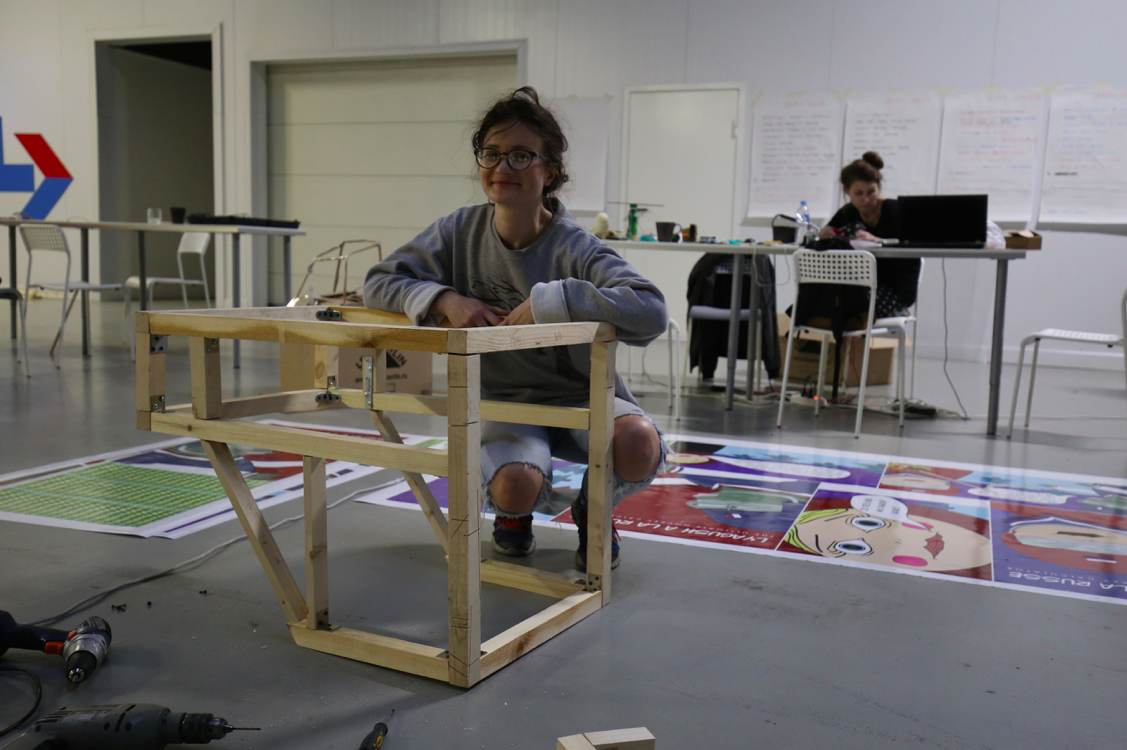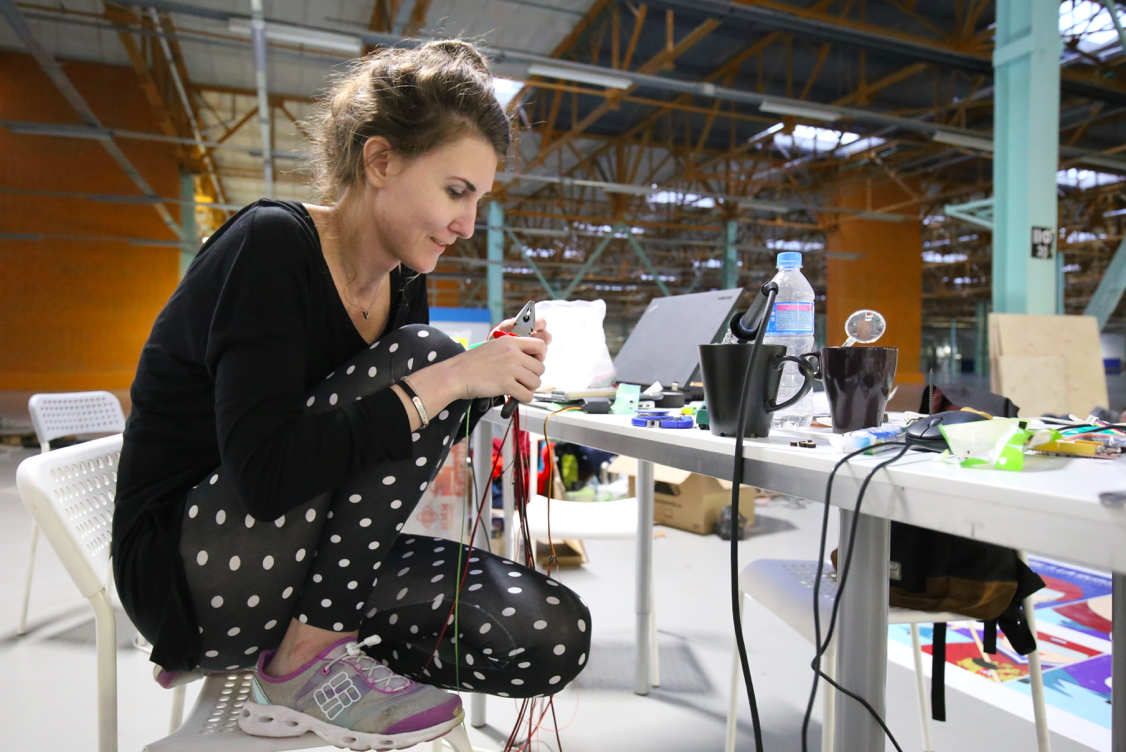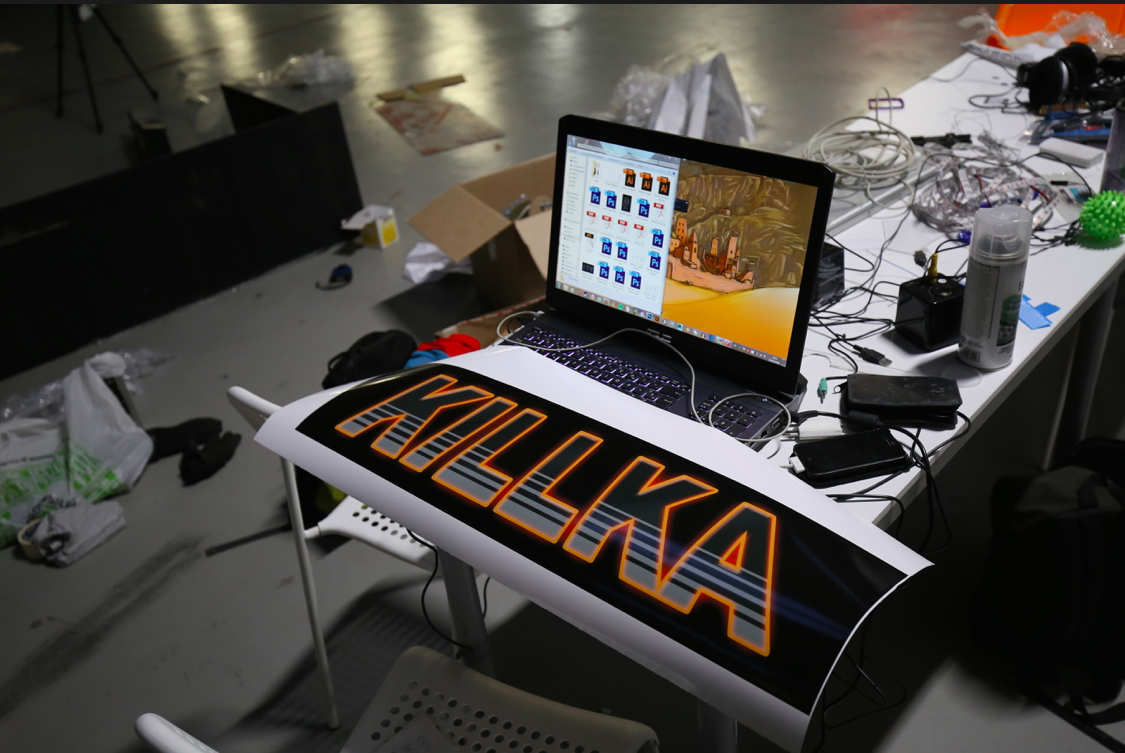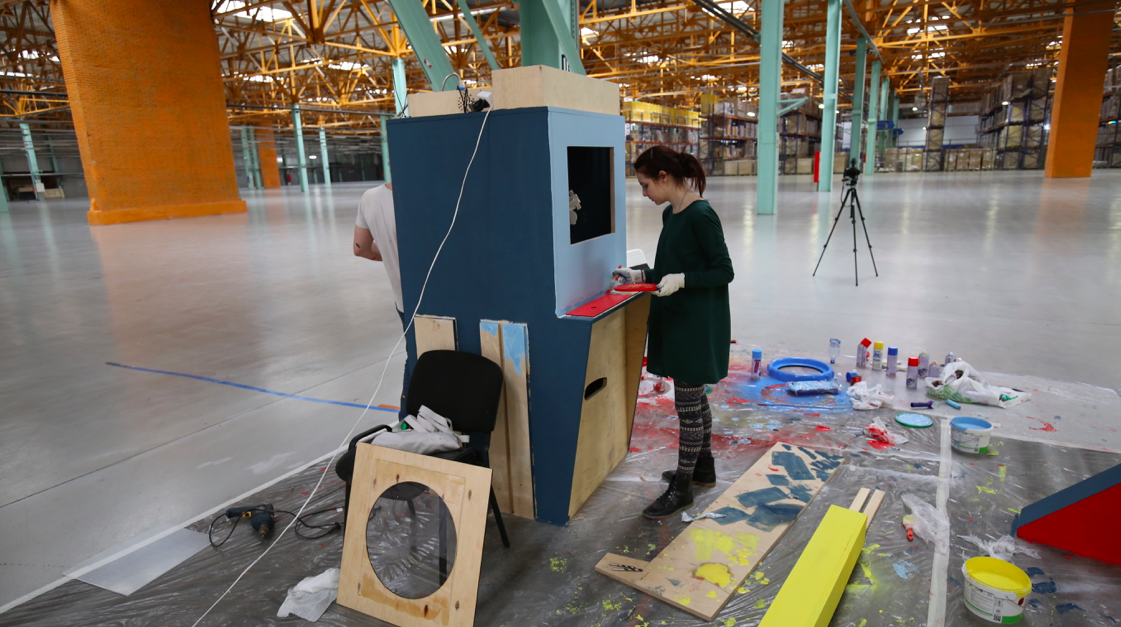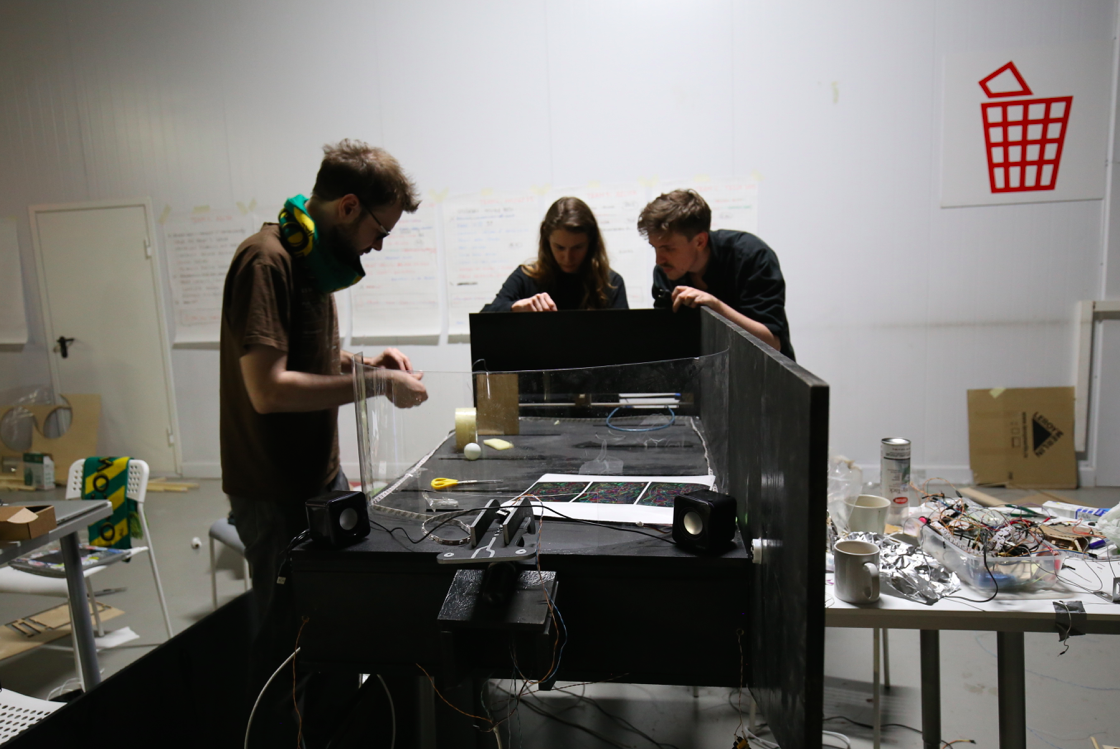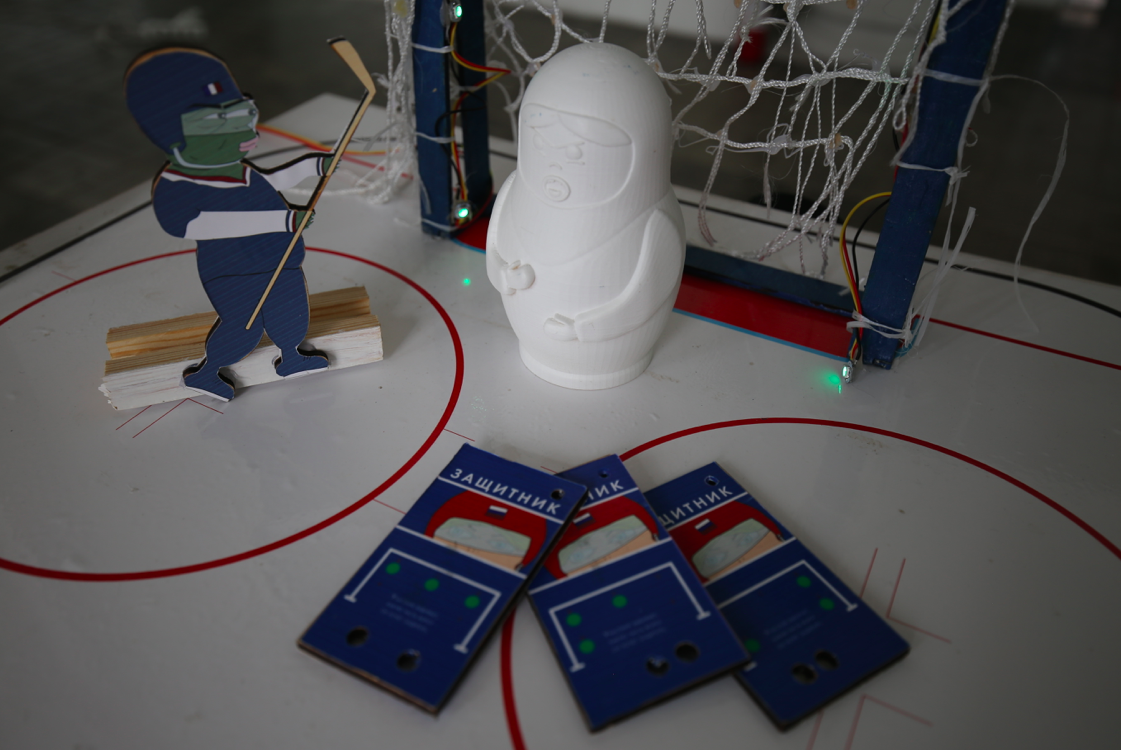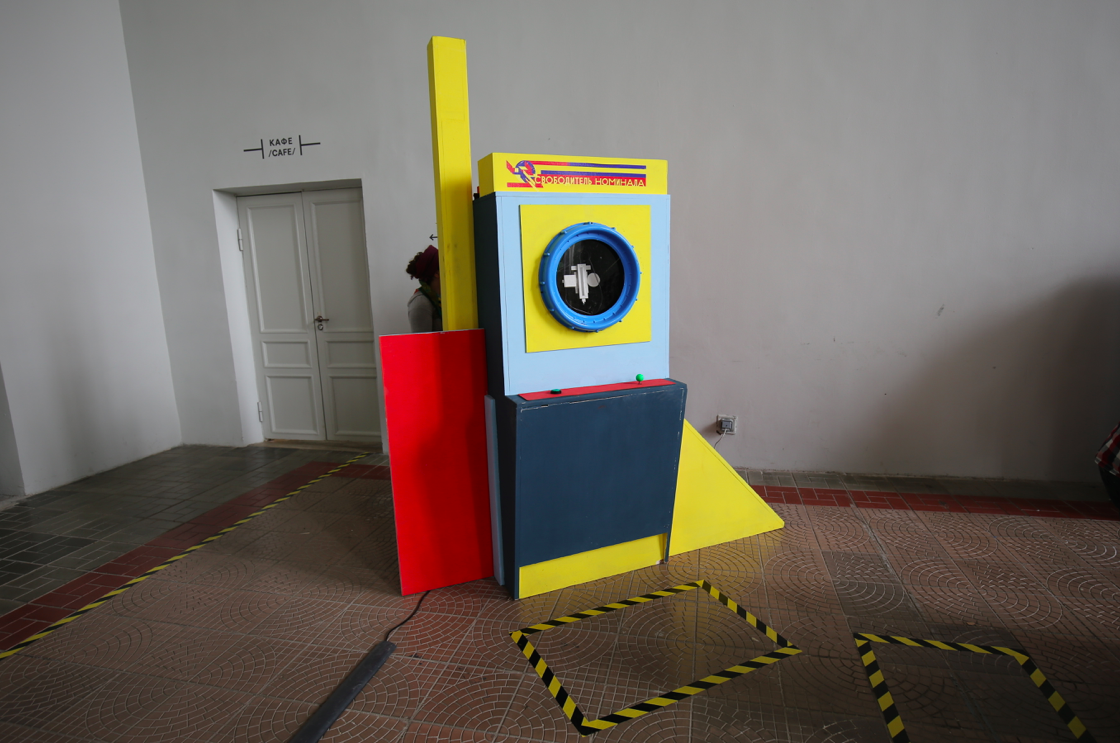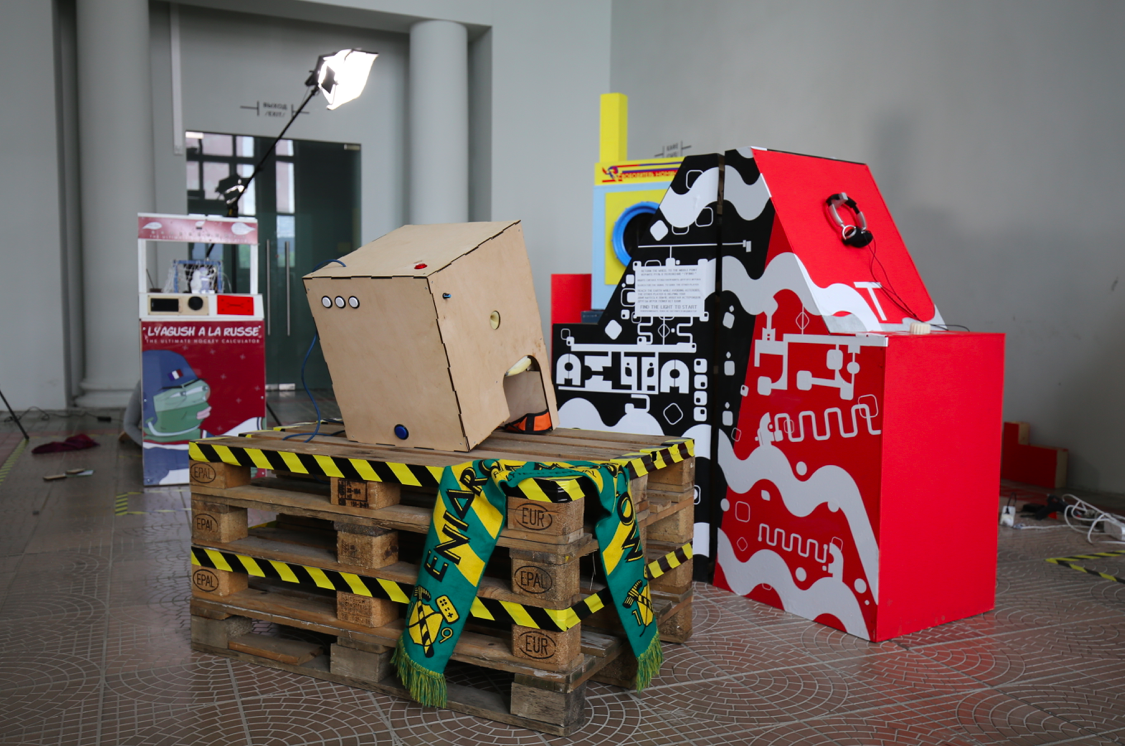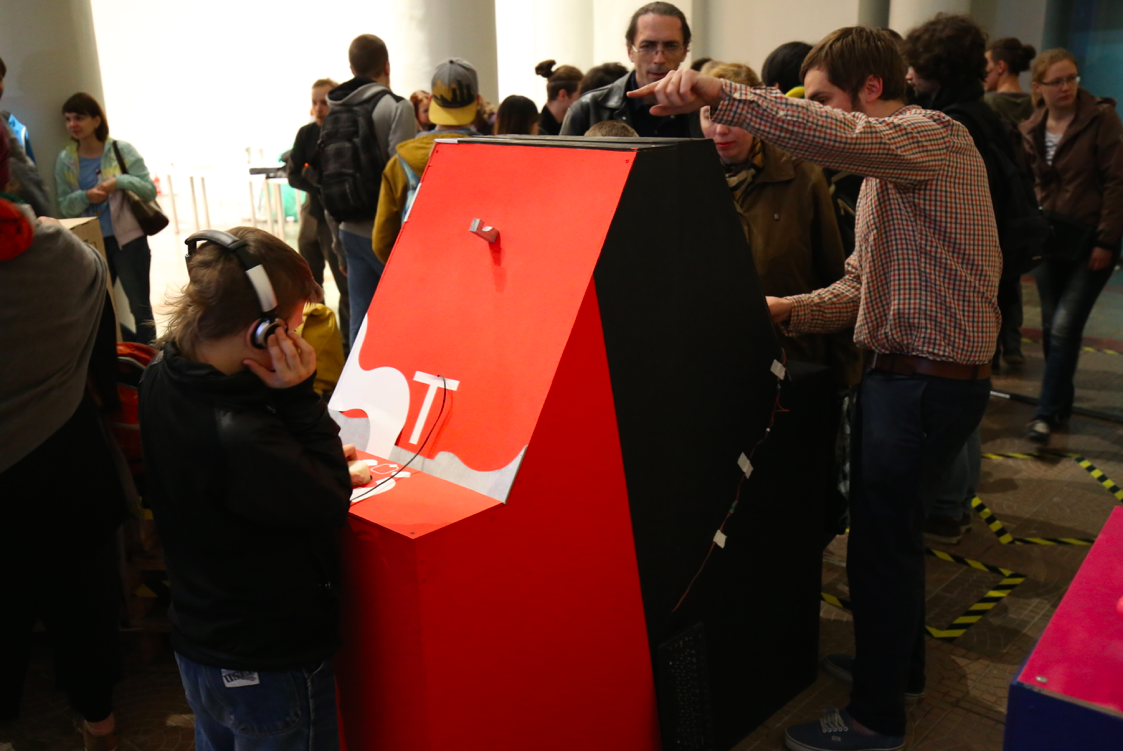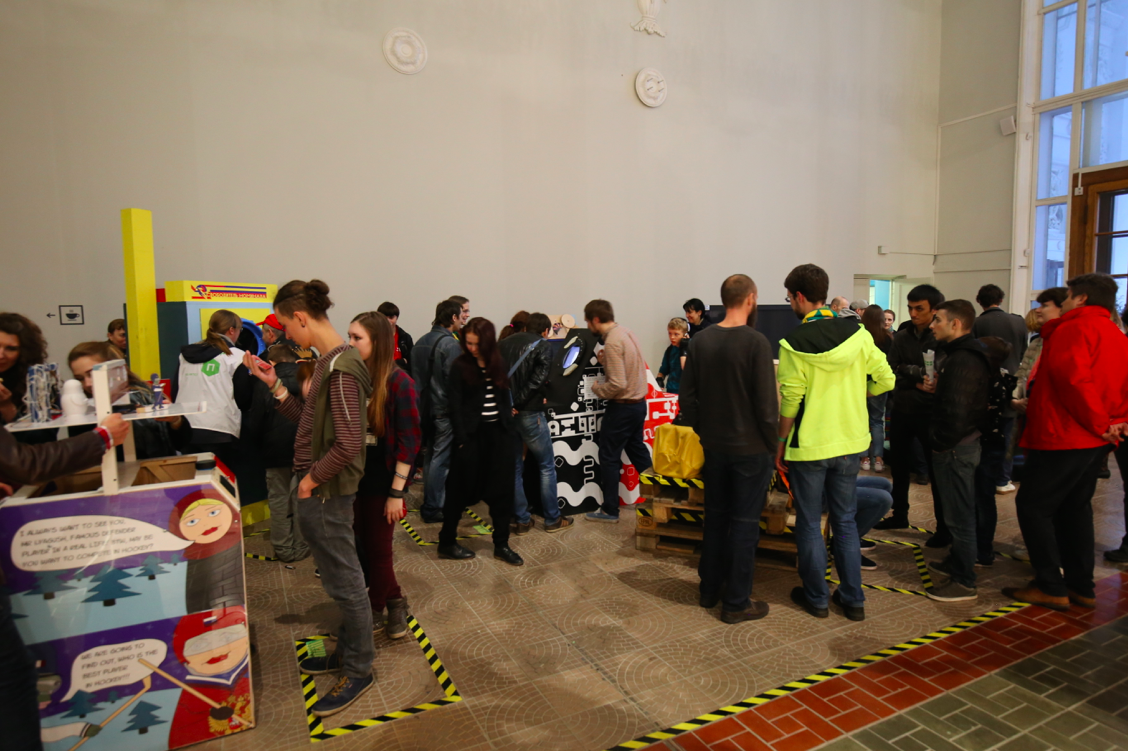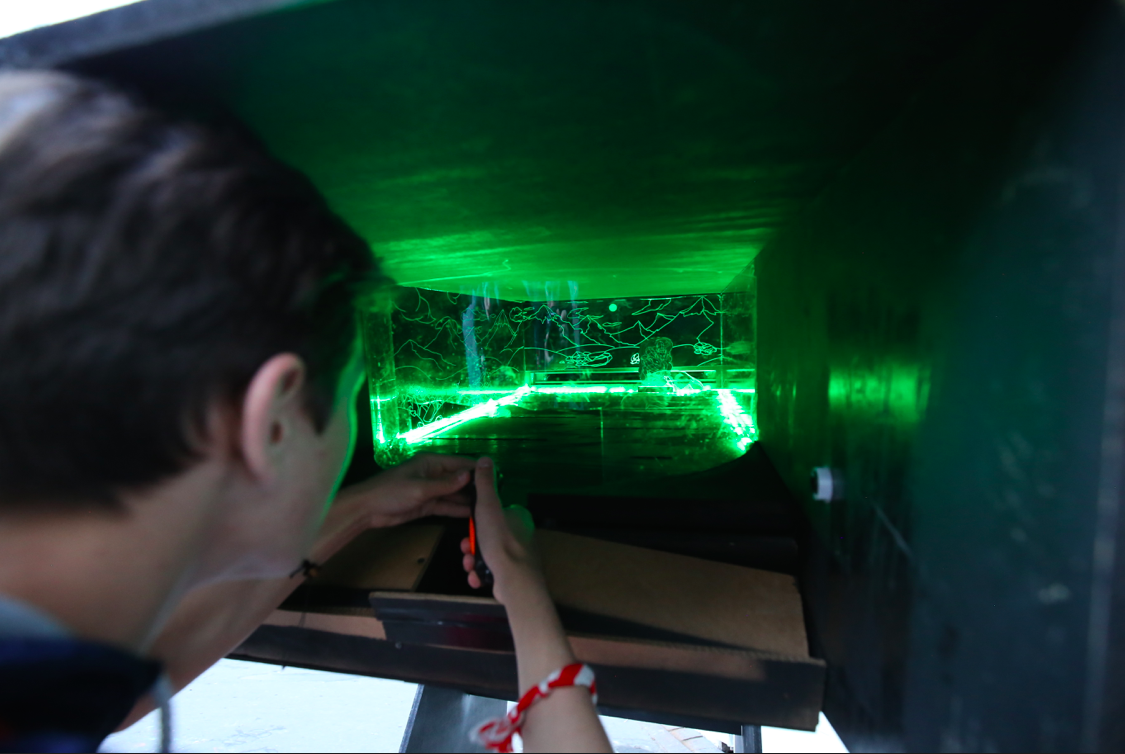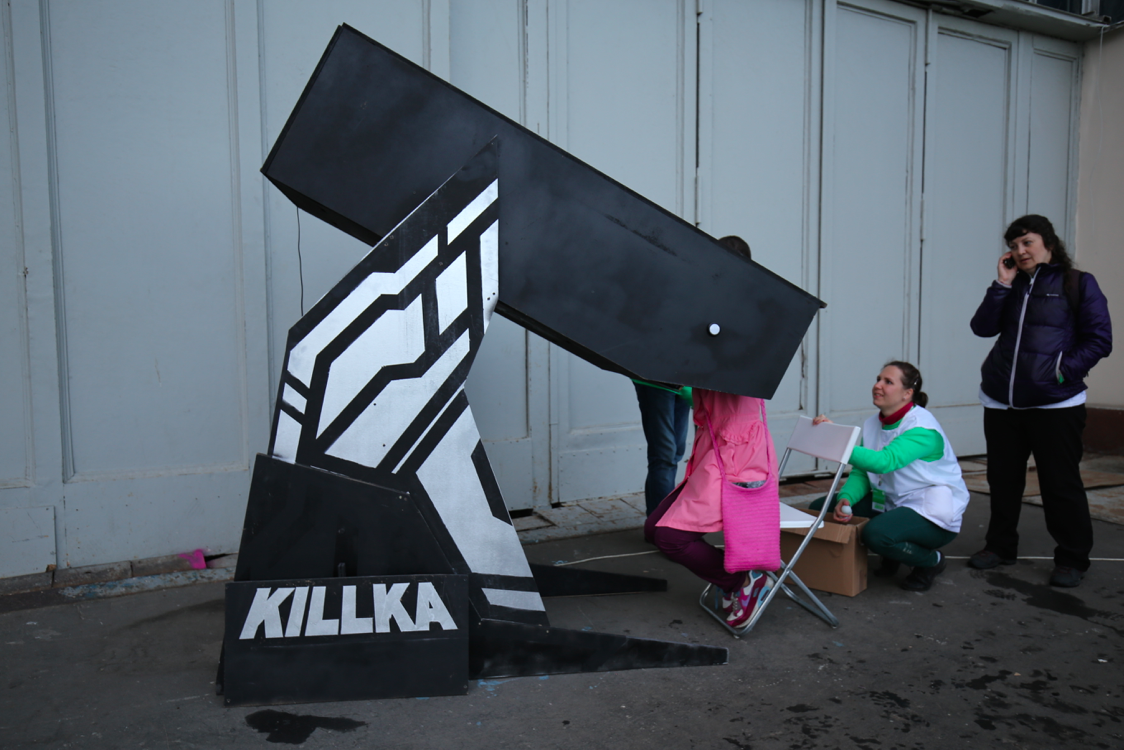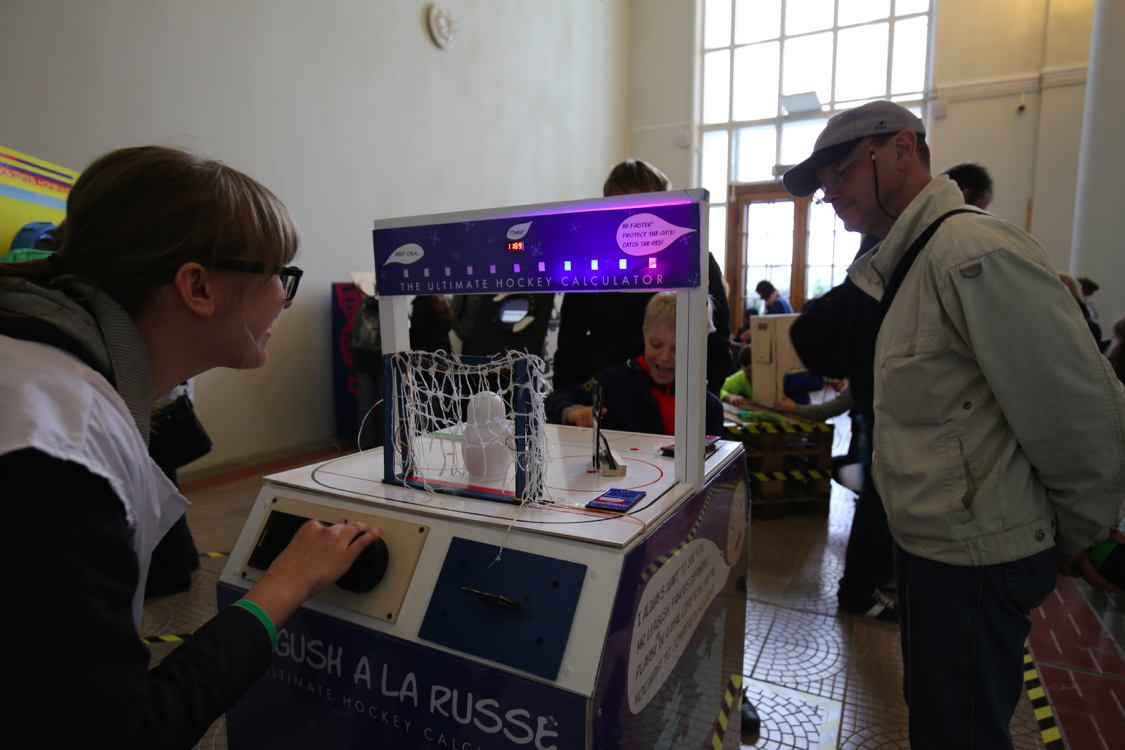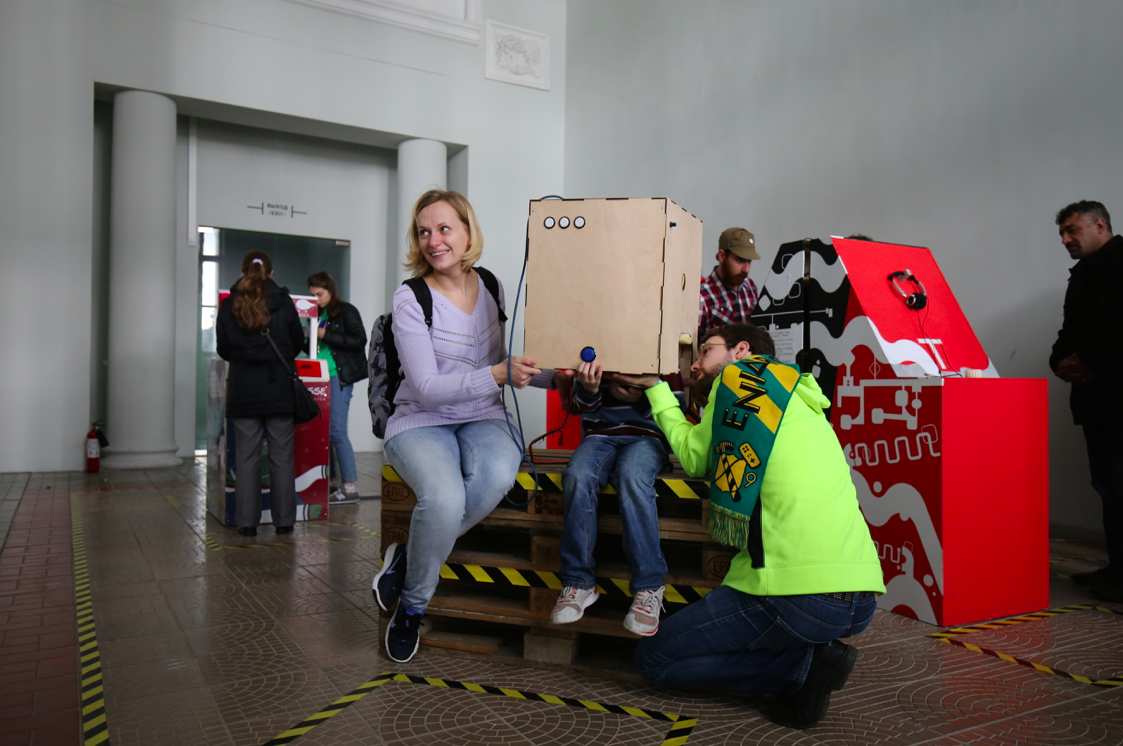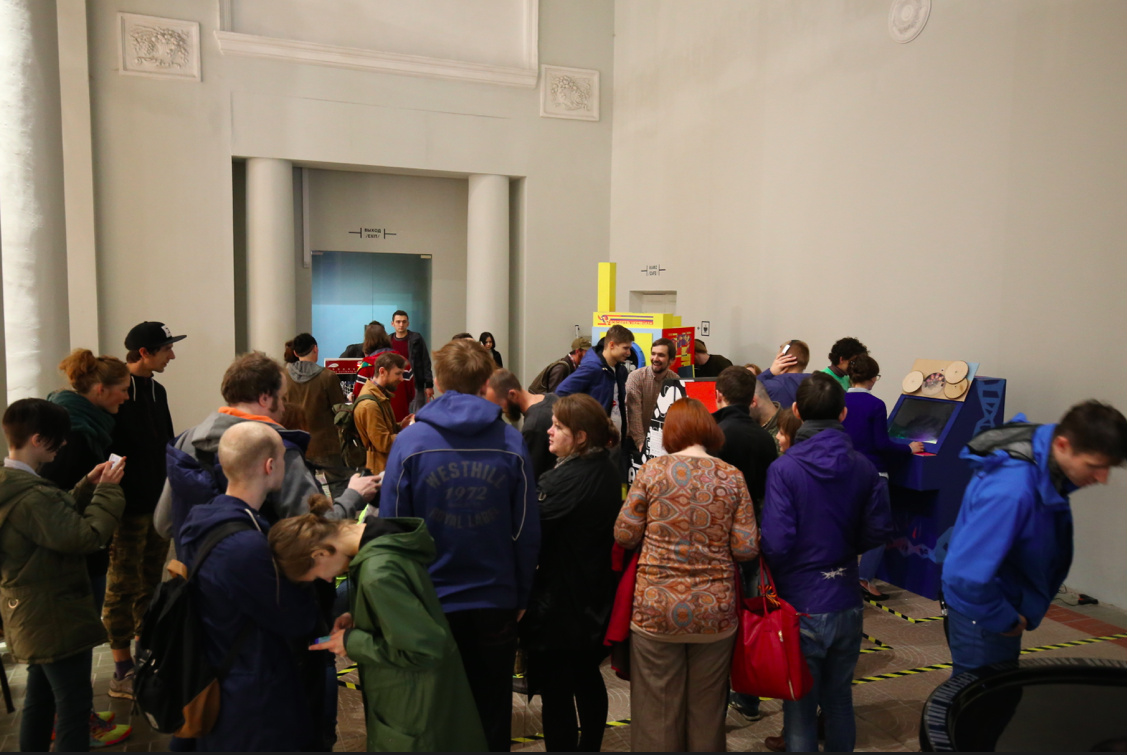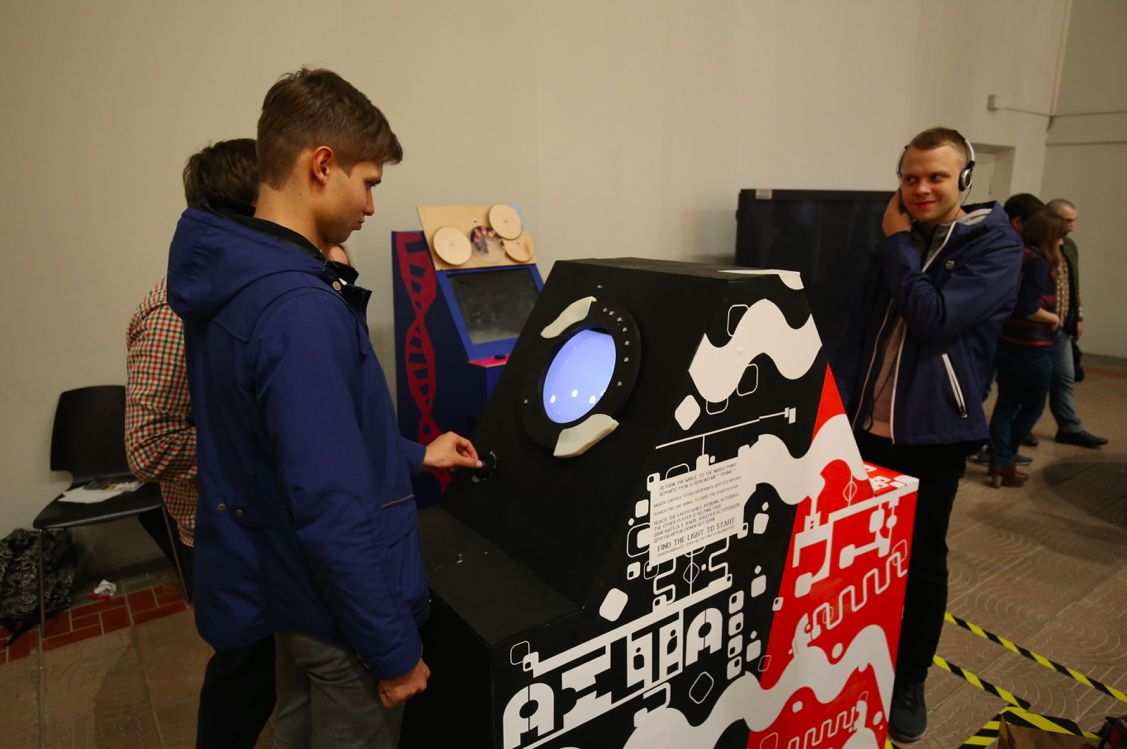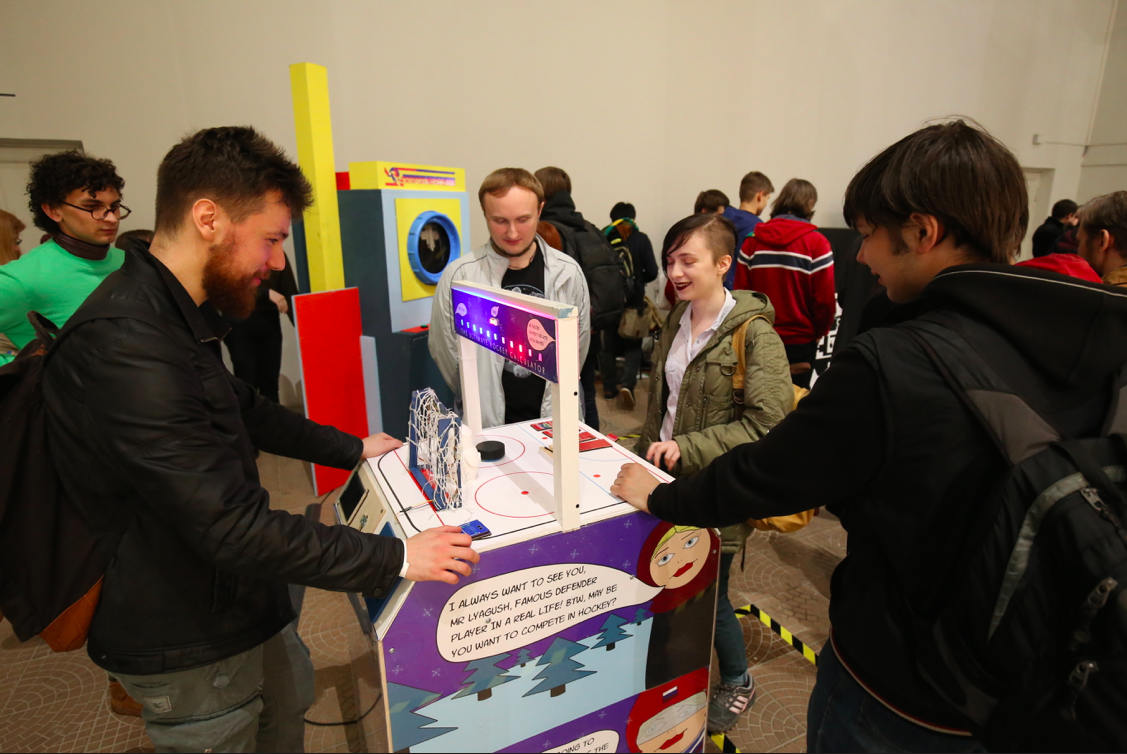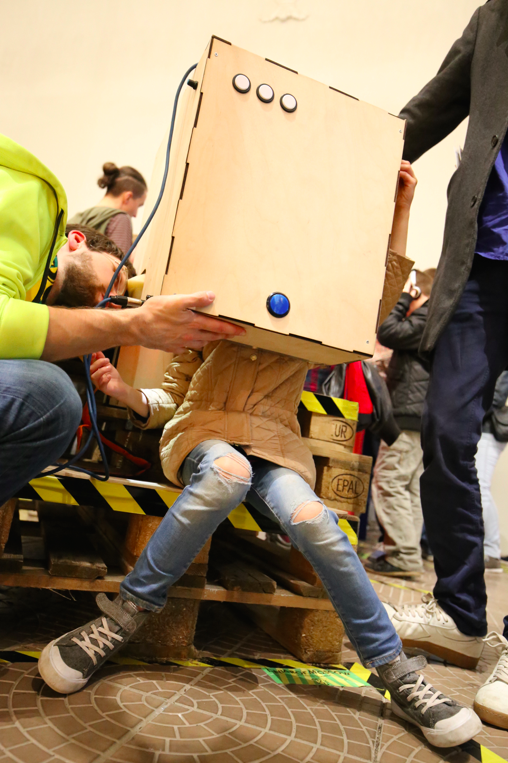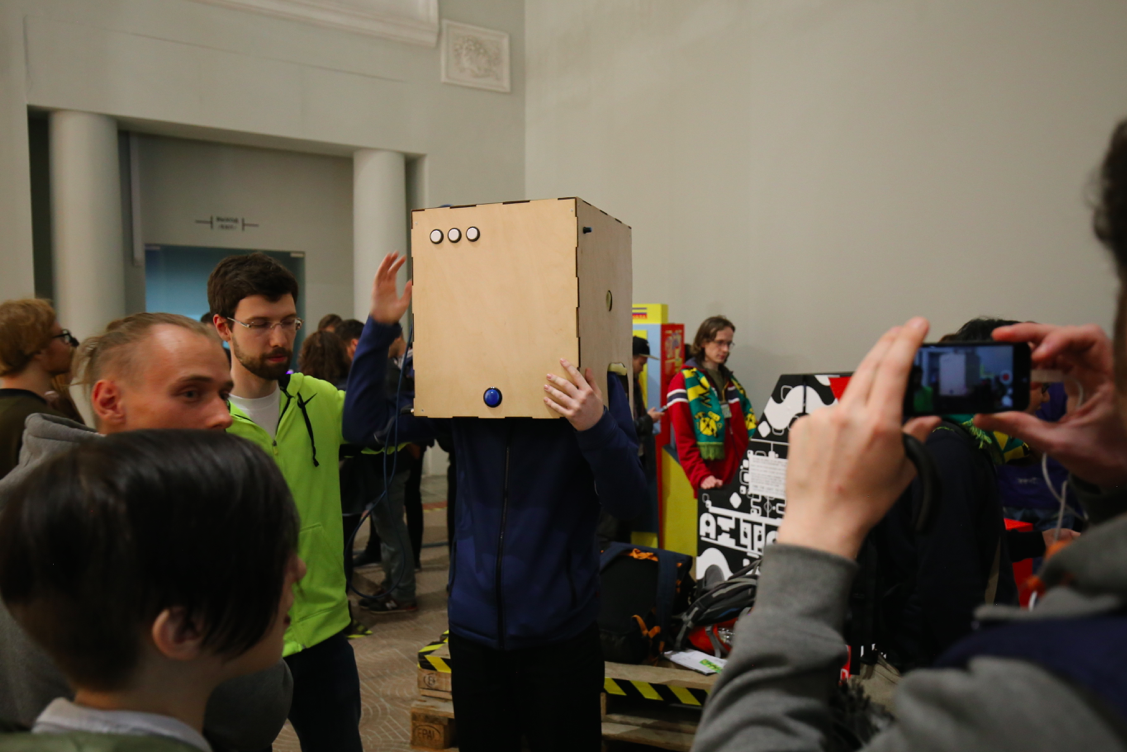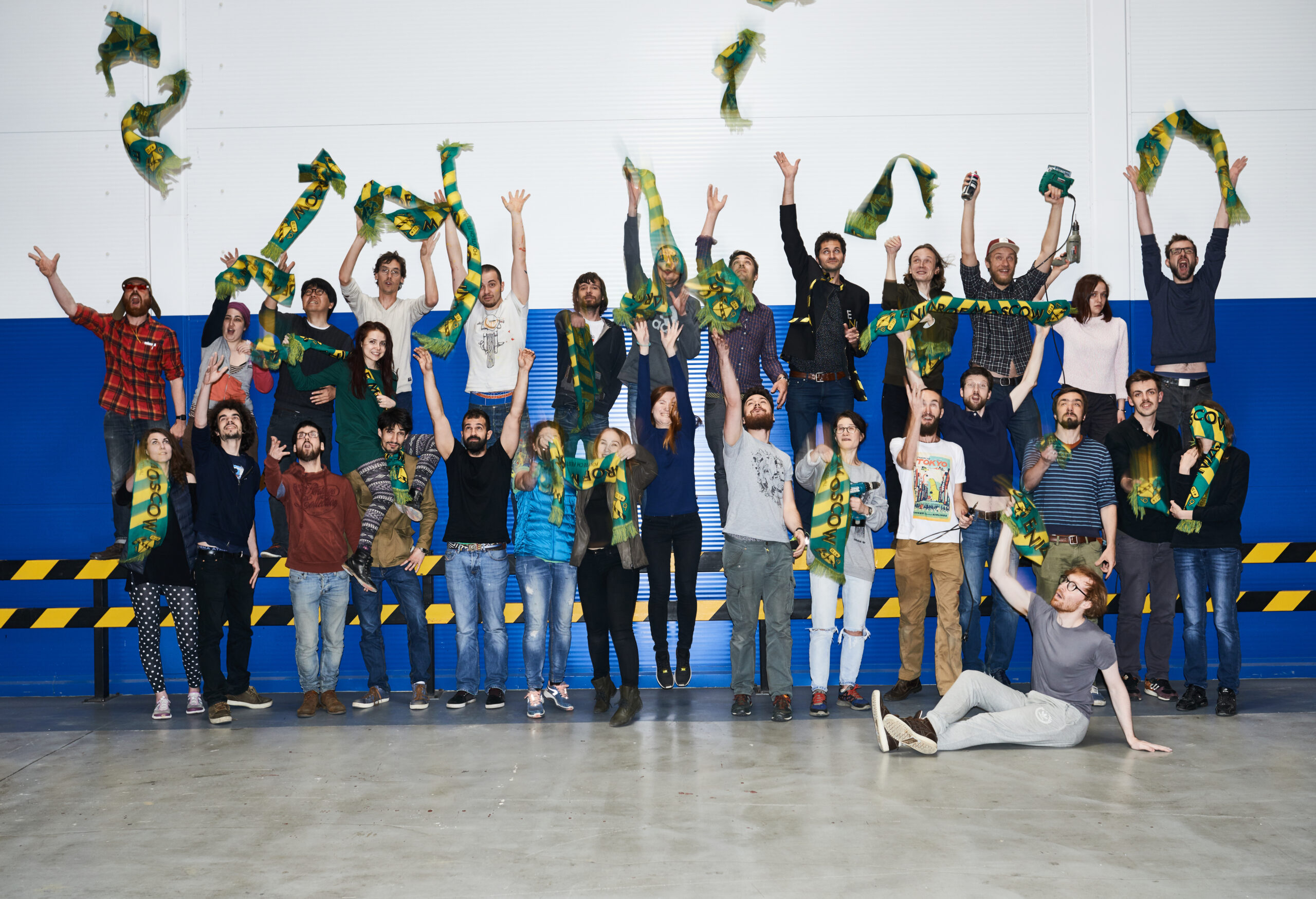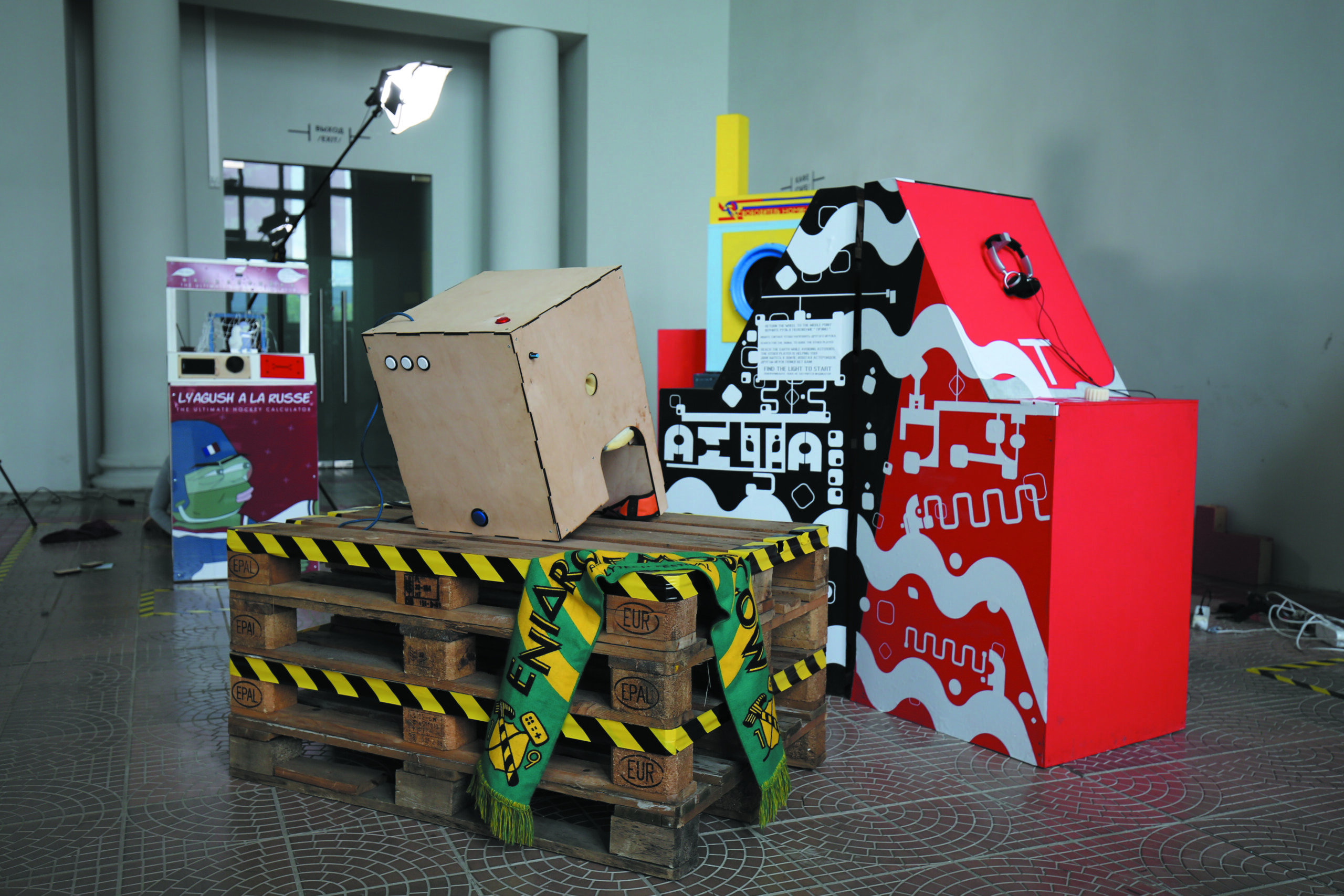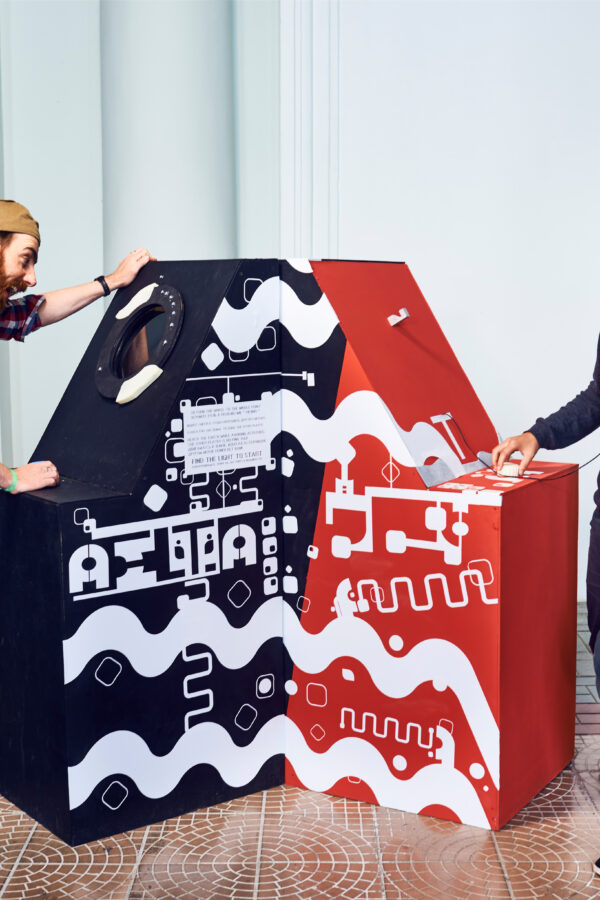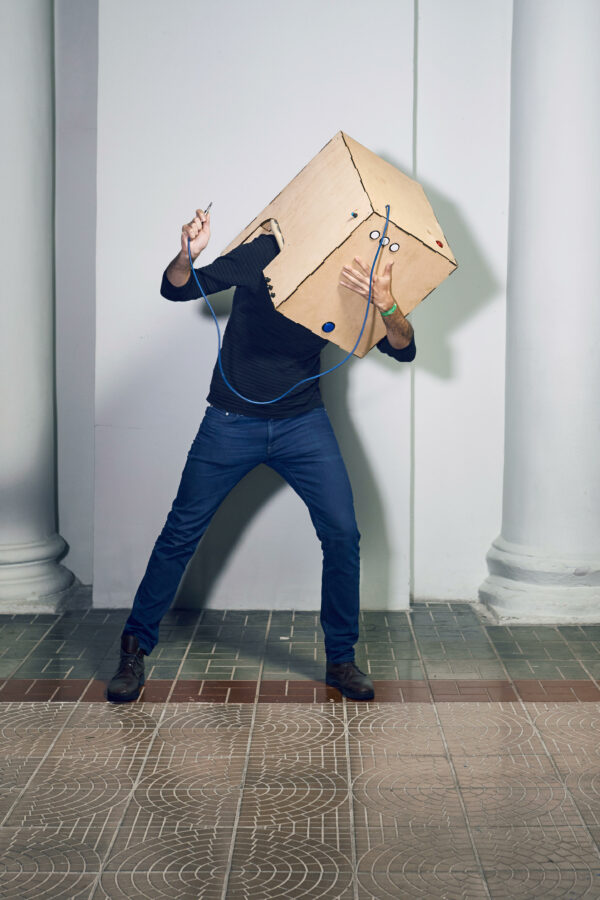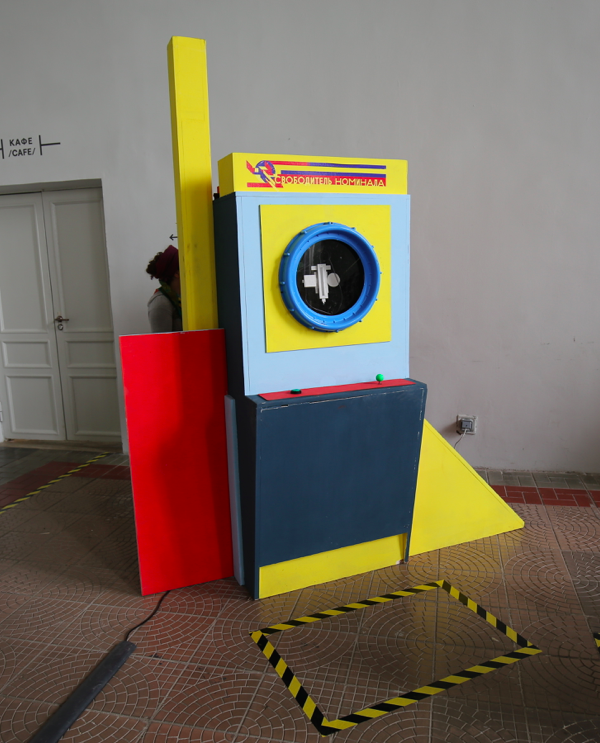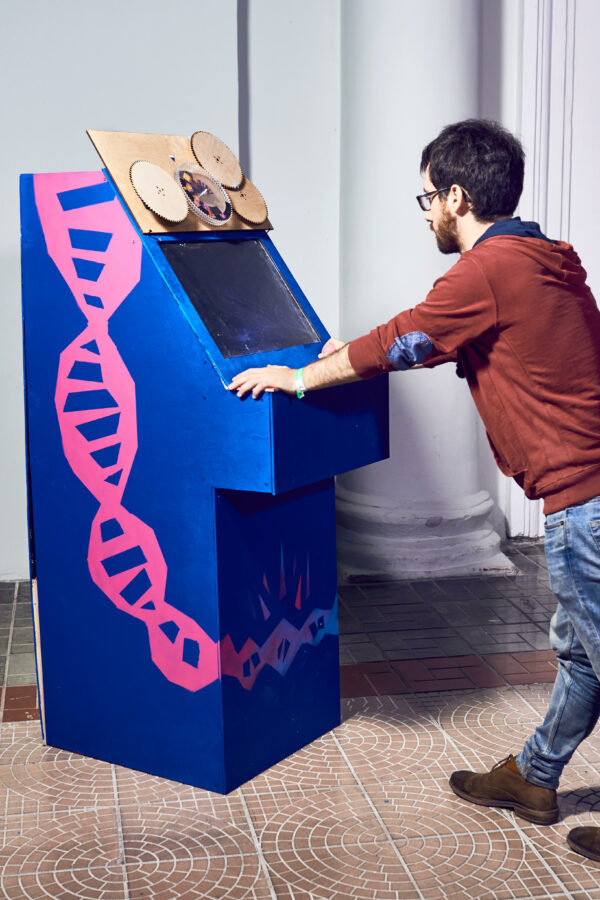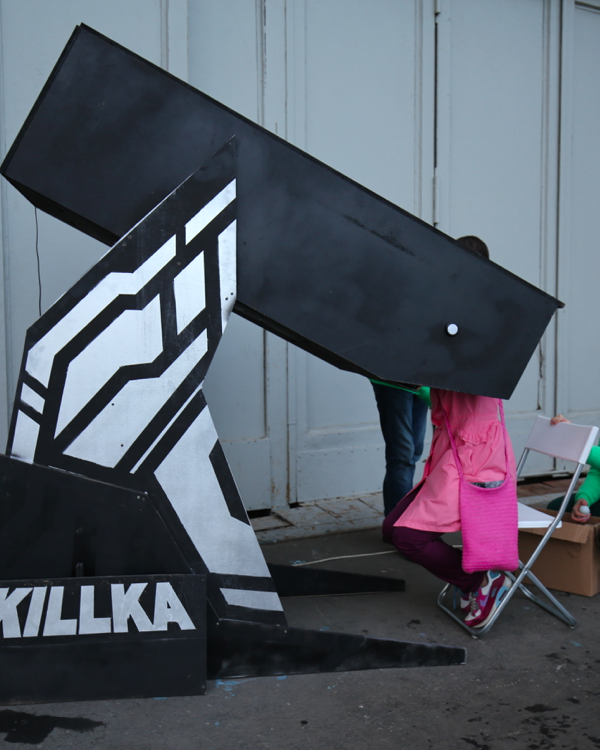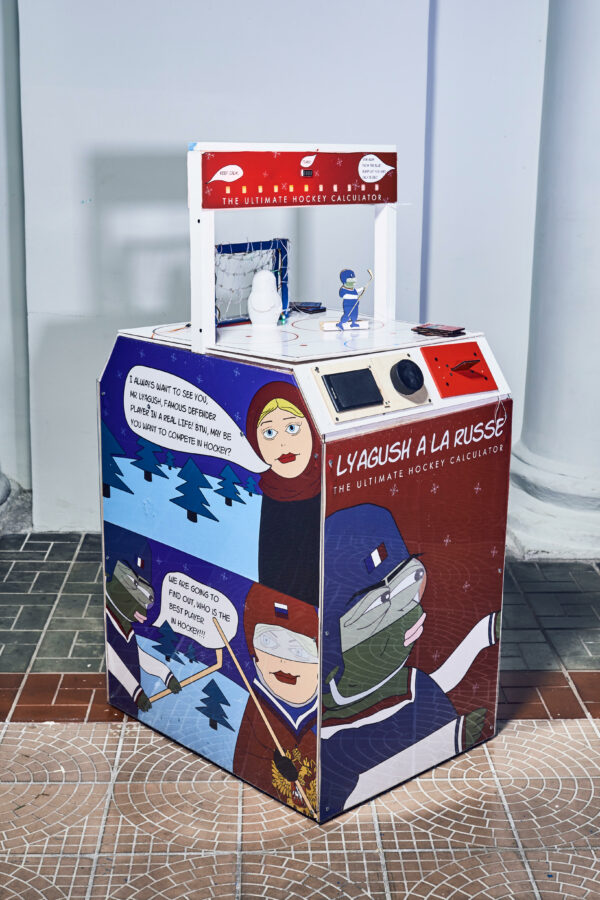10-22nd May 2016 / Polytech Festival / Moscow – Russia
Workshop : May 10-19 – exhibition : May 21-22, presentation of results at the Polyptych Festival (Industry Square, VDNKh)
In 2015 Antonin took part of the Polytechfestival with Waterlight Graffiti, during this trip he had the opportunity to visit the Soviet Arcade Museum in Moscow. Antonin thought it would be amazing to create an Eniarof with fake arcade game machines from the Soviet era. After discussing with Alexandra Khazina, the festival curator, a project began to emerge for 2016. After further discussions with the Labex Arts-H2H, the EnsAD school (where Sophie Daste and Antonin teach) and the ATI team at the University of Paris 8, funding was secured to bring a French group of students and teachers/artists to Moscow to conduct a retrospeculative design workshop with a group of 16 Moscow-based participants from various backgrounds, including film decorators, engineers, art students and graphic designers. The workshop began with a special Eniarof card game session referencing Russian cultural specificity, and teams were formed to create 6 arcade machines in an intensive 10 days workshop. The second day was dedicated to creating “Fake It!” to evaluate the feasibility of the ideas. The workshop place was incredible : HSE Lab – Prototyping Center of the Higher School of Economics (Volgogradskiy Prospect, 42, building 5, Technopolis Moscow).
The video of Eniarof Moscow which says more than a long speech about the atmosphere during the preparations:
Here is an example of a “fake it” made during the second days of the workshop. Where participate had to simulate their proposition in front of the others participate and coordination team in order to get a better understanding of their intentions :
We are proud to have had the opportunity to create and conduct an interview with the director of the Museum of Soviet Arcade Machines about the incredible history of these arcade machines produced during the Cold War. Check out the interview here : https://vimeo.com/332176048
And here article on the website Makery with more explanations from Antonin.
The 6 arcade machines created during the workshop were:
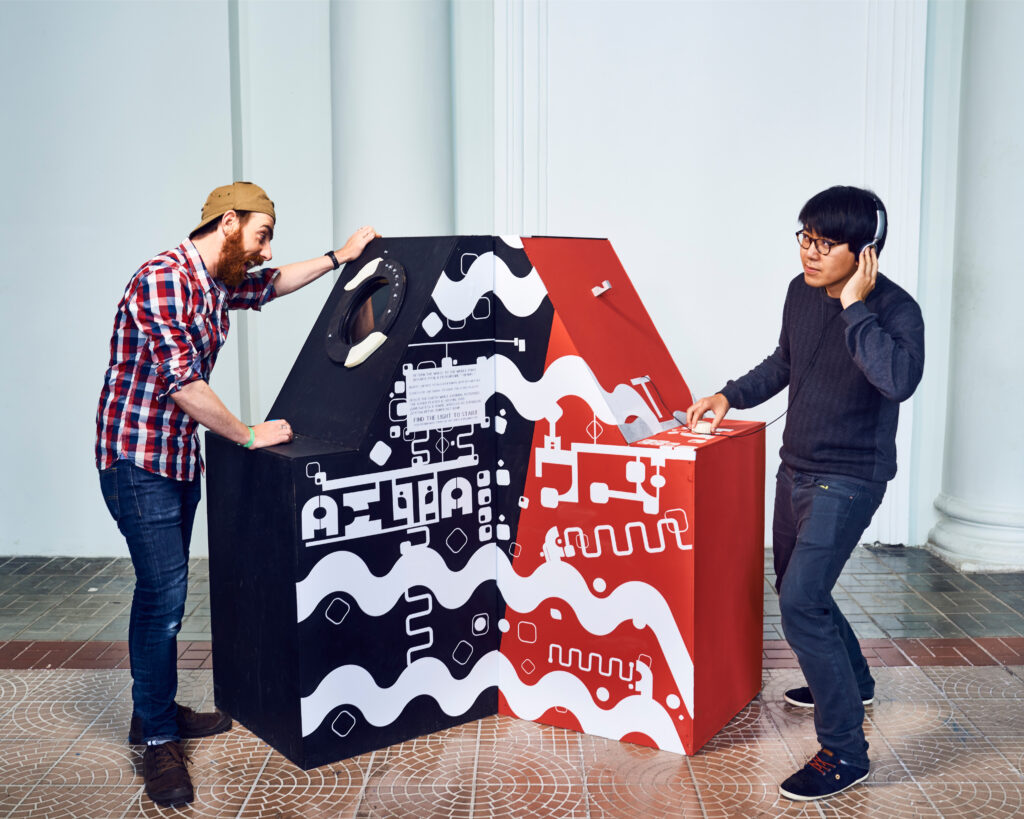
- “Аэлитa (Aelita)” by Dionysis Zamplaras, Ivan Bichenko, Sergey Shapov, Natalia Sheremetova: A double arcade machine that allows two players to play together. “Aelita” is the name of a heroine from Tolstoy, whose story was adapted into a silent film by Protazanov in 1924. In this new version, Aelita is the queen of Mars and wishes to join Russian engineer Loss, who is decoding messages from Mars. The player controlling Aelita pilots a spaceship heading towards Earth. On the other side, the player controlling Loss listens to Aelita’s voice. Whenever the spaceship deviates from its trajectory, the engineer loses Aelita’s voice, which gets lost amidst Soviet songs of the Red Army. Loss must find Aelita’s voice again in order for her to continue her journey.
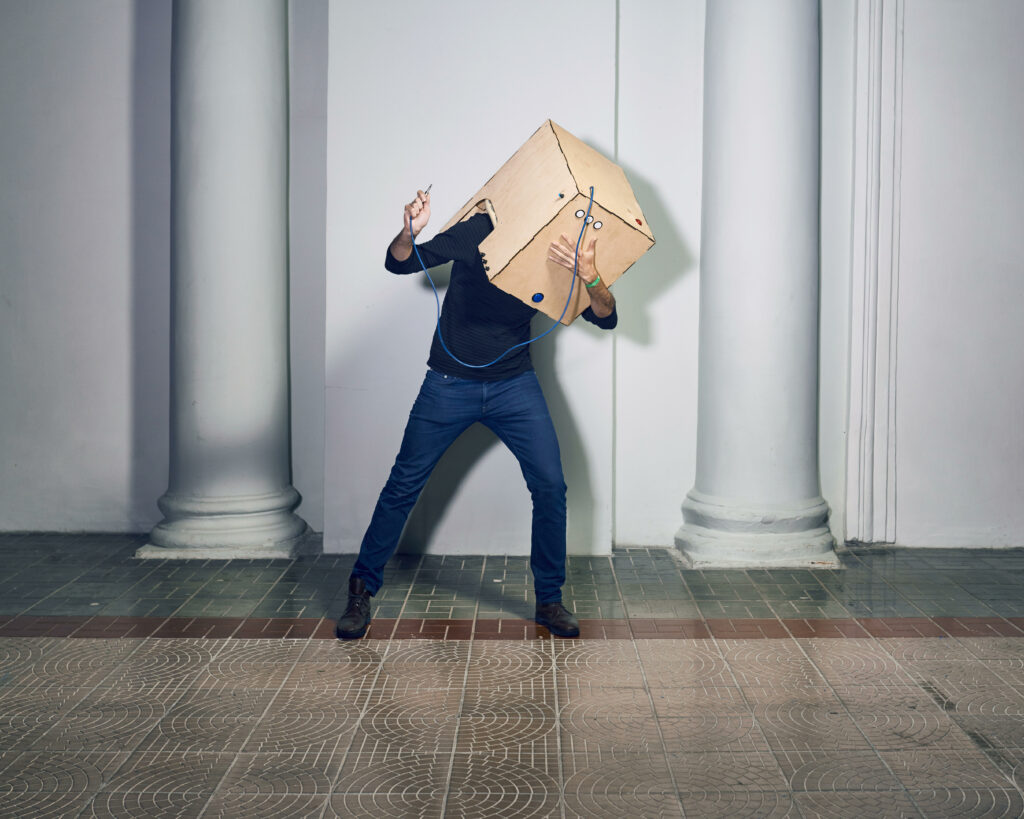
- “Tesla says” by Grégoire Delzongle, Mikhail Panfilov, Sergey Komradenkov, Ksenia Voronova: A lightweight, almost cubic-shaped installation that the player wears on their shoulders, cutting them off from the world around them during the experience. The player is trapped in the installation and must obey commands dictated by Tesla, similar to a game of “Simon Says” in order to escape the trap set by Edison.
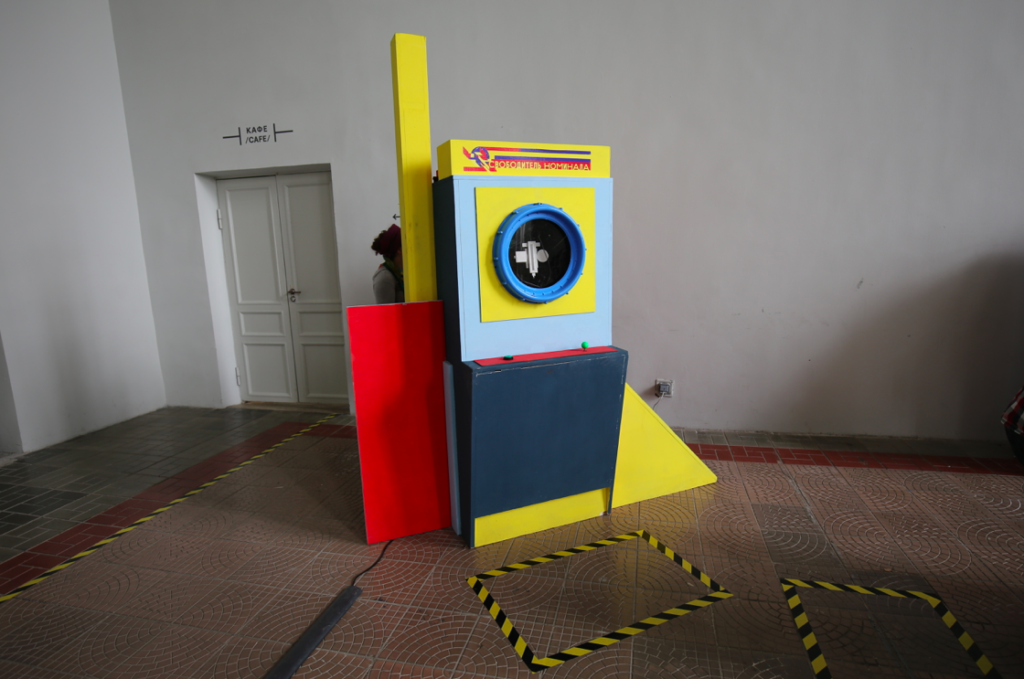
- “Освободитель номинала” (Osvoboditel’ nominala) by Matthieu Sherrer, Petr Smirnov, Aleksey Ryumi, Anastasy Lebedeva: A massive, colorful arcade machine inspired by Constructivism. It pits two players against each other, who can watch each other through glass sections of the machine. The first player inserts a Russian coin to play, and their goal is to retrieve their money by traversing a wooden maze with the coin held on the other side of the wall by a light-sensored electro-magnet. The second player’s goal is to make the first player lose their money by controlling a UFO that can shine light on the electro-magnet, causing it to retract and drop the coin into the machine’s belly.
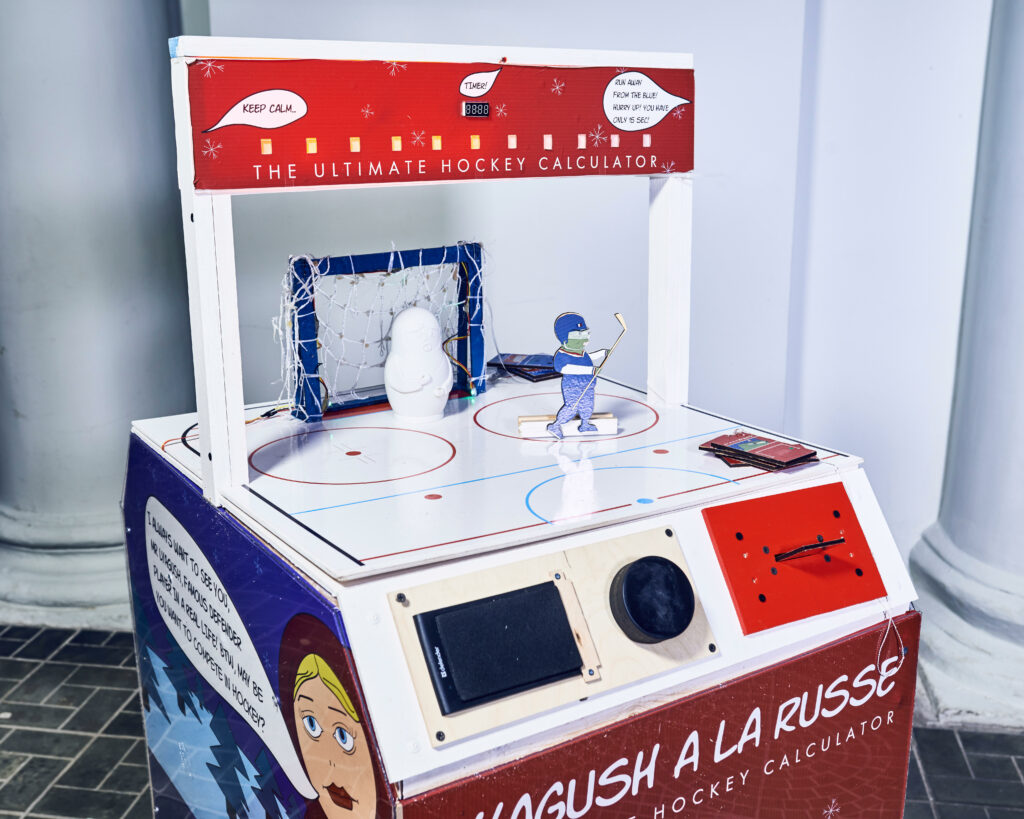
- “лягуш’ à la Russe” (Lliagouch’ à la Russe) by Erwan Devaux, Alexandr Semenov, Vadim Goncharov, Ludmila Kulikova: A supercomputer simulation of ice hockey featuring the French Lliagouch’ (frog) facing off against the Russian Matryoshka deep in Siberia. Two players compete by playing punch cards, their choices determining the frog’s launch and the Russian doll’s reception can lead to a speed duel. If the French team wins, a Charles Aznavour song plays, if it’s a Russian victory, a traditional Russian folk song can be heard.
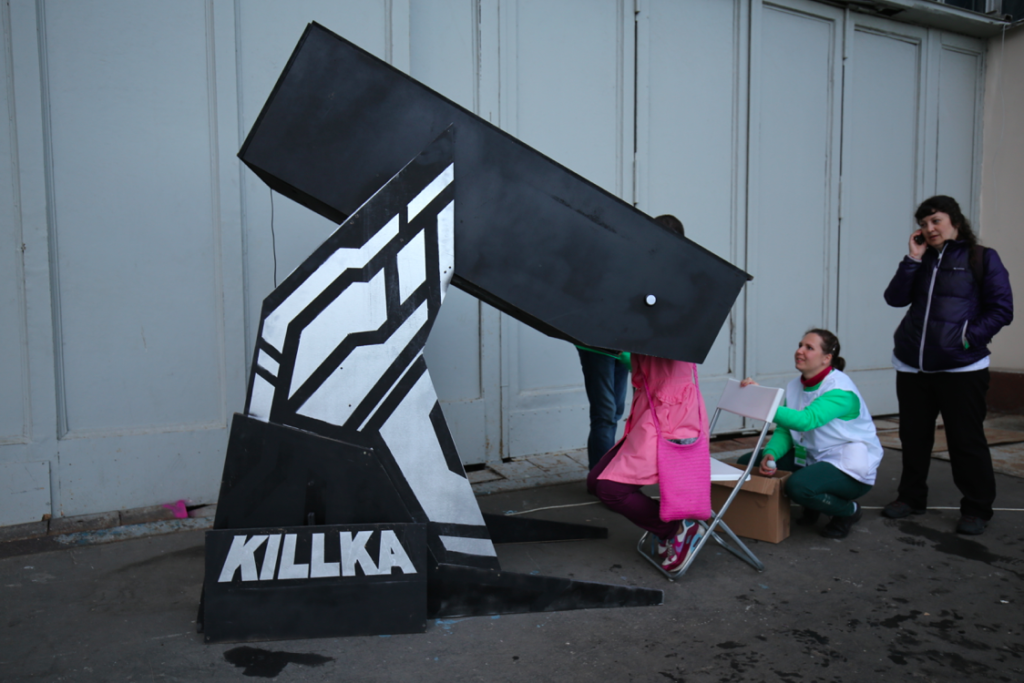
- “Kill’Ka” by Florian Guilaud, Vladimir Tarasov, Tatyana Denisova, Evgeniya Resnyanskiy, and Mihail Antsimov: Kill’Ka is a massive arcade machine where the player is invited to insert their head into the device: a large black rectangular box where a monochrome landscape is drawn (either green, blue, or red). They hold a mechanical launcher of ping-pong balls and must aim at a moving target, a red light confirms success with each hit. When the player earns enough points, the level changes color and reveals a new landscape.
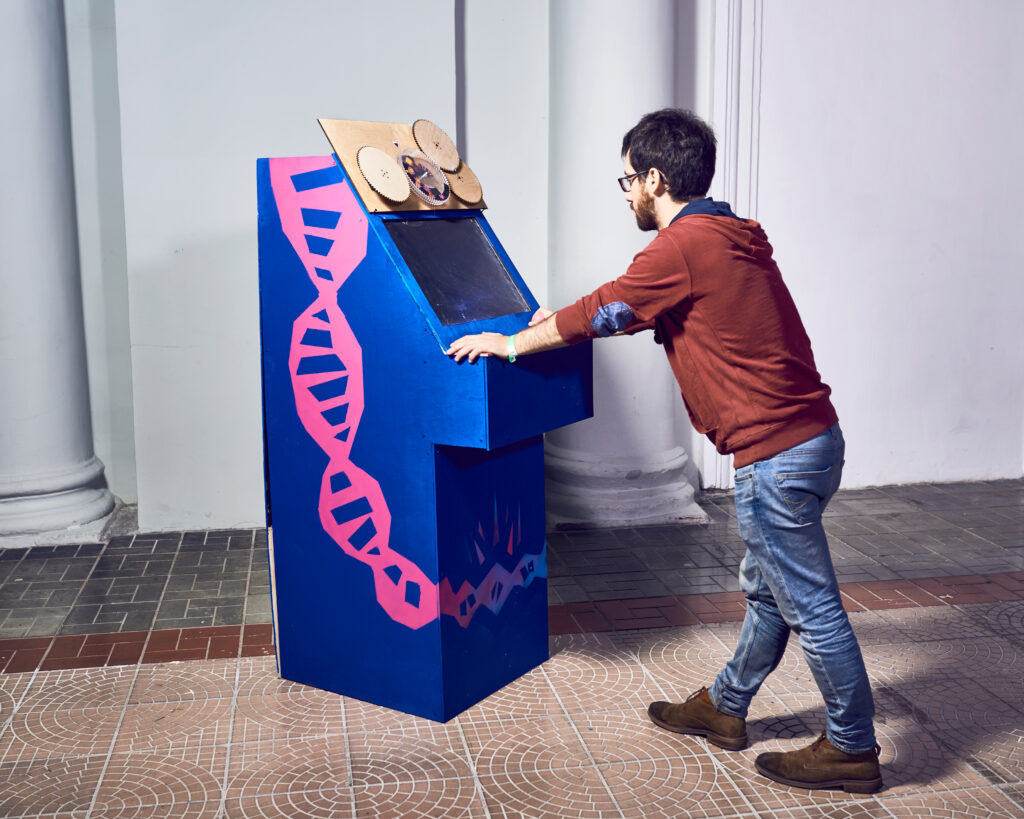
- “Darwin in Charge” by Maxime Grange, Irina Galkina, Igor Lachtabega, and Elena Agafonova: Darwin in Charge is an arcade machine with the most classic visual appearance in its overall form. However, it does not have a screen, it is simulated by a grid of five by five light tiles. The aesthetic is reminiscent of the futuristic “alien” representation in Spielberg’s film Close Encounters of the Third Kind. The game is a puzzle game that is only understandable to the player, the spectator only sees lights turning on and off. The player’s successes impact their evolution, which is mechanically presented on the front of the machine.
Coordination Team: Alexandra Khazina, Antonin Fourneau, Ivan Boganstev, Sophie Daste, Eric Hao Nguy, Guillaume Stagnaro, Grégoire Lauvin, Ekaterina Fedotova, and Andris Rutinsh. List of student participants from Ensad: Dyonisos Zamplaras, Grégoire Delzongle, and Matthieu Sherrer. List of student participants from Moscow: Ivan Bichenko, Sergey Shapov, Natalia Sheremetova, Mikhail Panfilov, Sergey Komradenkov, Ksenia Voronova, Petr Smirnov, Aleksey Ryumi, Anastasy Lebedeva, Alexandr Semenov, Vadim Goncharov, Ludmila Kulikova, Vladimir Tarasov, Tatyana Denisova, Evgeniya Resnyanskiy, Mihail Antsimov, Irina Galkina, Igor Lachtabega, and Elena Agafonova. List of student participant from Paris 8: Erwan Devaux, Maxime Grange, and Florian Guilaud. Photographer: Manuel Braun. Partners: Labex Arts-H2H, EnsAD, EnsADLab, University of Paris 8, ATI/INRéV, French Institute of Russia, Polytech Museum, and HSE Lab.
